Battle Harbour – Labrador’s Must Visit Destination
This is my third post from Labrador. In the last one Alison and I visited the UNESCO World Heritage Site of Red Bay. In this post we will visit the once thriving town of Battle Harbour that for over a century was the unofficial capitol of the region. It is now both a National Historic Site and a Historic District of Canada, recognized as being the best preserved example of a true Newfoundland and Labrador outport. This is the description of why Battle Harbour is important in Canadian history.
Battle Harbour Historic District was designated a national historic site of Canada because, through their history, architecture and layout, the buildings, structures and open spaces which constitute the district are evocative of the 19th and early 20th-century fishing outports of Newfoundland and Labrador and illuminate the rich mercantile history of such traditional fishing communities.
I first visited Battle Harbour with my son Dale on our Trans-Labrador RV trip and was so impressed that I knew I needed to return with Alison one day and that day is now. Please join us as we spend two days on this historic island.
History of Battle Harbour
Up until the collapse of the industry in 1992, the history of coastal Newfoundland and Labrador was the cod fishery. It was John Cabot who, way back in 1497, brought back to Europe tales of the fabulous size and abundance of the cod to be found on the Grand Banks. This brought an annual visitation of Basque, French, Spanish, Portuguese and English fishers to the area and expanded the fishery all around the island of Newfoundland and to the shores of Labrador. In 1775, Englishman John Slade from Poole established what are known in Newfoundland and Labrador as a ‘fishing premises’ on Battle Island, which incidentally is not named for a battle that took place here, but rather a corruption of the Portuguese word batel which means boat. The name appears on maps as far back as 1560.
The enterprise was a huge commercial success with not only cod, but salmon and seals being major components of the resources exploited here. Battle Harbour became a permanent community that for many years was the largest settlement in Labrador. The Slade interests owned the fishing premises until 1871 when it was sold to Baine, Johnston & Co. based out of St. John’s who in turn sold it to the Earle Freighting Services Ltd. in 1955 who operated it until the early 1990’s. To the credit of the Earle family, they donated the entire operation to the Battle Harbour Historic Trust Inc. which operates it today as a tourist destination.
Today there are no permanent residents or liveyers as they are called in Newfoundland & Labrador, residing in Battle Harbour, but there are a few seasonal residents on Battle Island and nearby Great Caribou Island. In effect, for most of the year it is a ghost town. However, from June to early September Battle Harbour has now become the ‘go to’ destination in southeast Labrador and for good reason as I will explain.
Getting to Battle Harbour
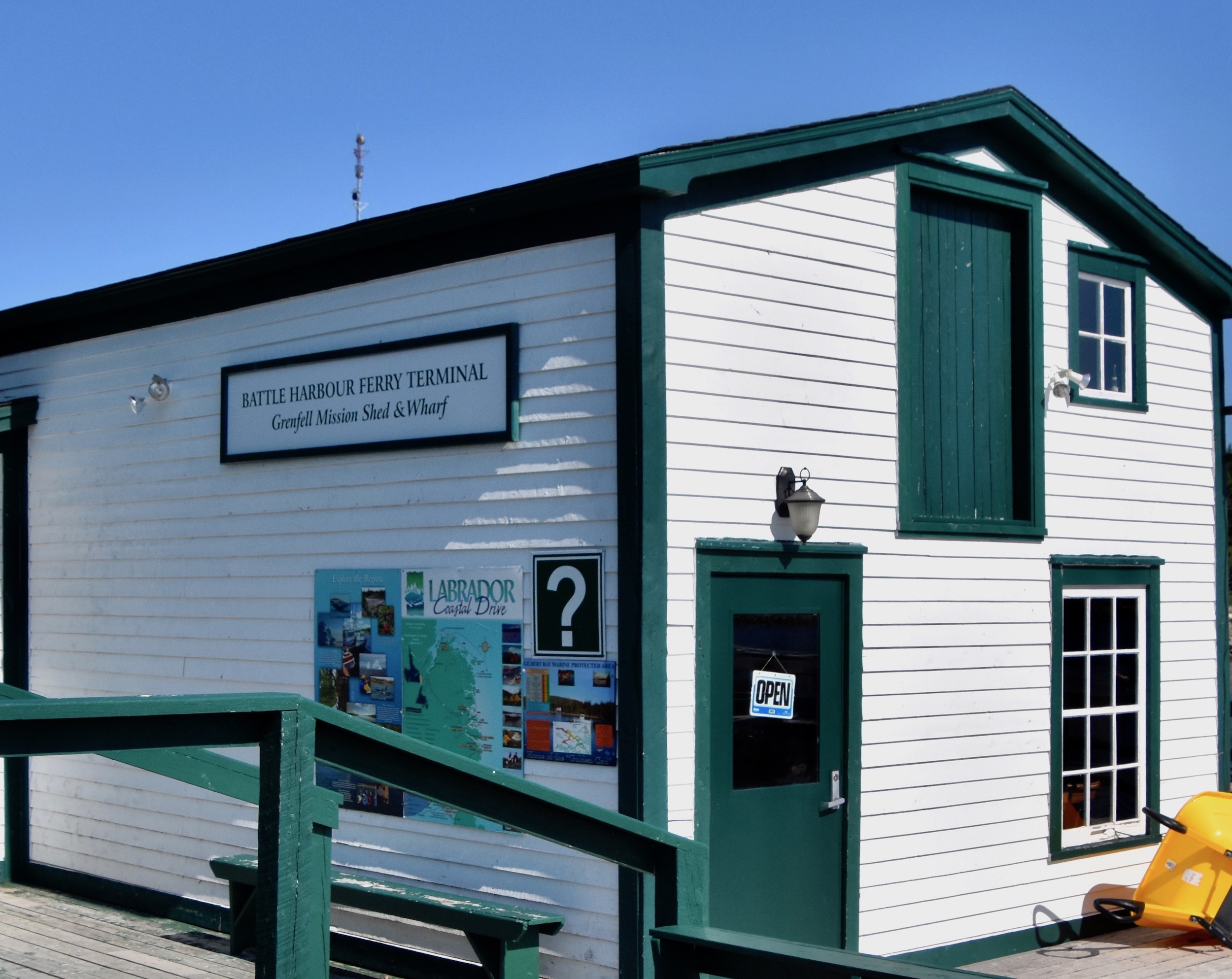
Battle Harbour is not the type of place you just show up at and expect to be accommodated. For one thing it’s 14.5 kms. (nine miles) offshore from the small village of Mary’s Harbour which is just off the Trans-Labrador highway some two hours and fifteen minutes from the ferry landing at Blanc Sablon, Quebec. You need to visit the website here to make reservations in advance. There are a variety of accommodations ranging from the bunkhouse to former private homes to the relative luxury of the Earle suite. There are also a large variety of packages to choose from including photography, arts and crafts, hiking to cod fishing. The packages include traditional Labrador meals served in the communal dining hall and most importantly, reservations on the boat to get you to Battle Harbour and back. There is one departure a day from Mary’s Harbour at 11:00 AM. In a previous post I noted that you cannot make this departure if you are arriving in Labrador on the same day from Newfoundland. You will need to stay somewhere in southeast Labrador or Quebec first.
The Trinity Pride departs from the wharf that once served the Grenfell Mission in Mary’s Harbour.
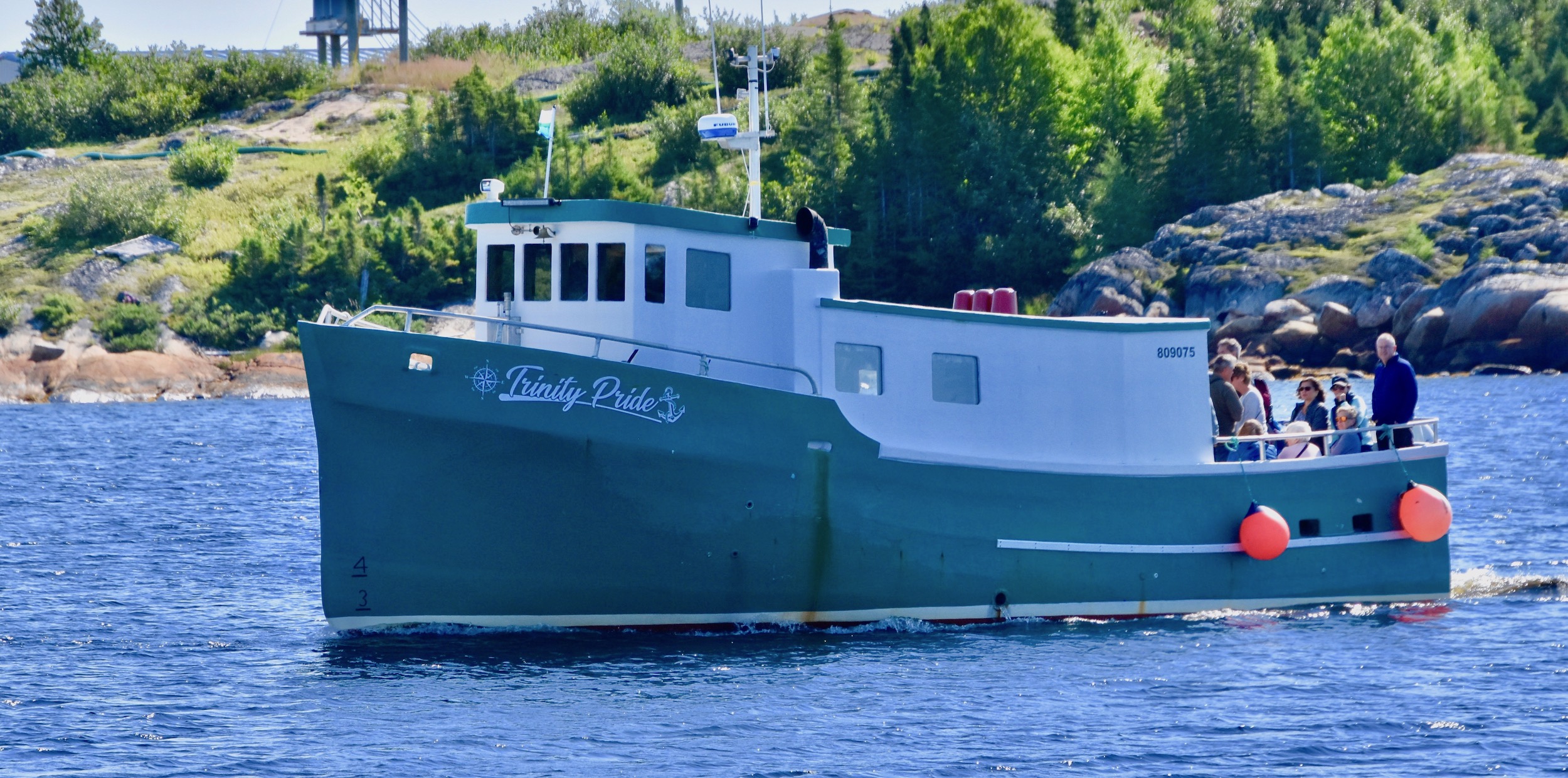
The trip takes over an hour and is the start of a great adventure as you look for whales, dolphins, seals and a variety of sea birds. Despite being in Labrador the weather was very clement and I didn’t even need a sweater.
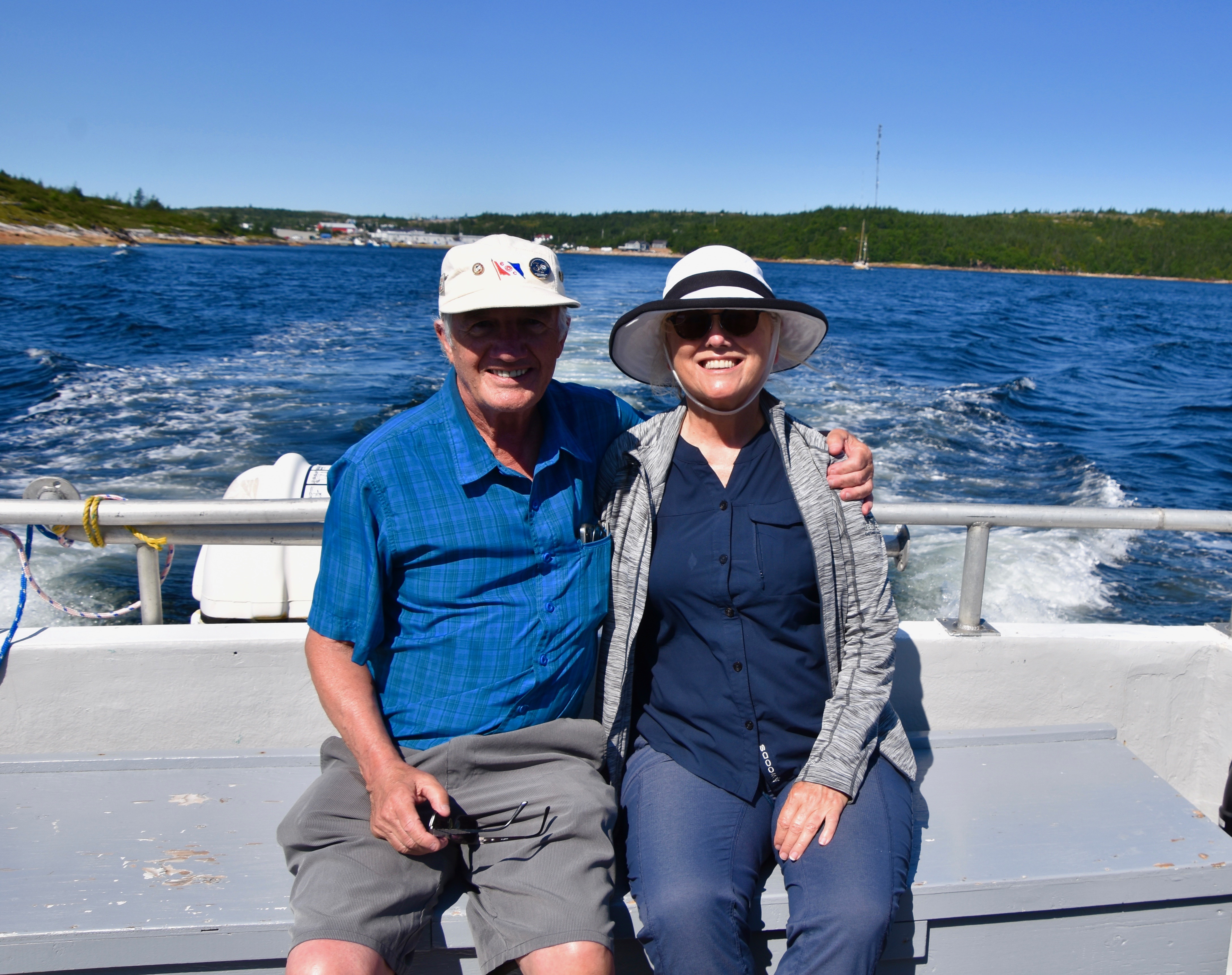
The arrival in Battle Harbour is something you will never forget. The boat passes alongside Great Caribou Island where there are both seasonal homes in a few spots and abandoned ones in others. It then rounds a cape and enters the tickle between Great Caribou and Battle Island. Suddenly almost out of nowhere an entire community comes into view. This is the Historic District taken from Great Caribou Island, but it gives you an inkling of just how different this place looks from anywhere else in Canada.
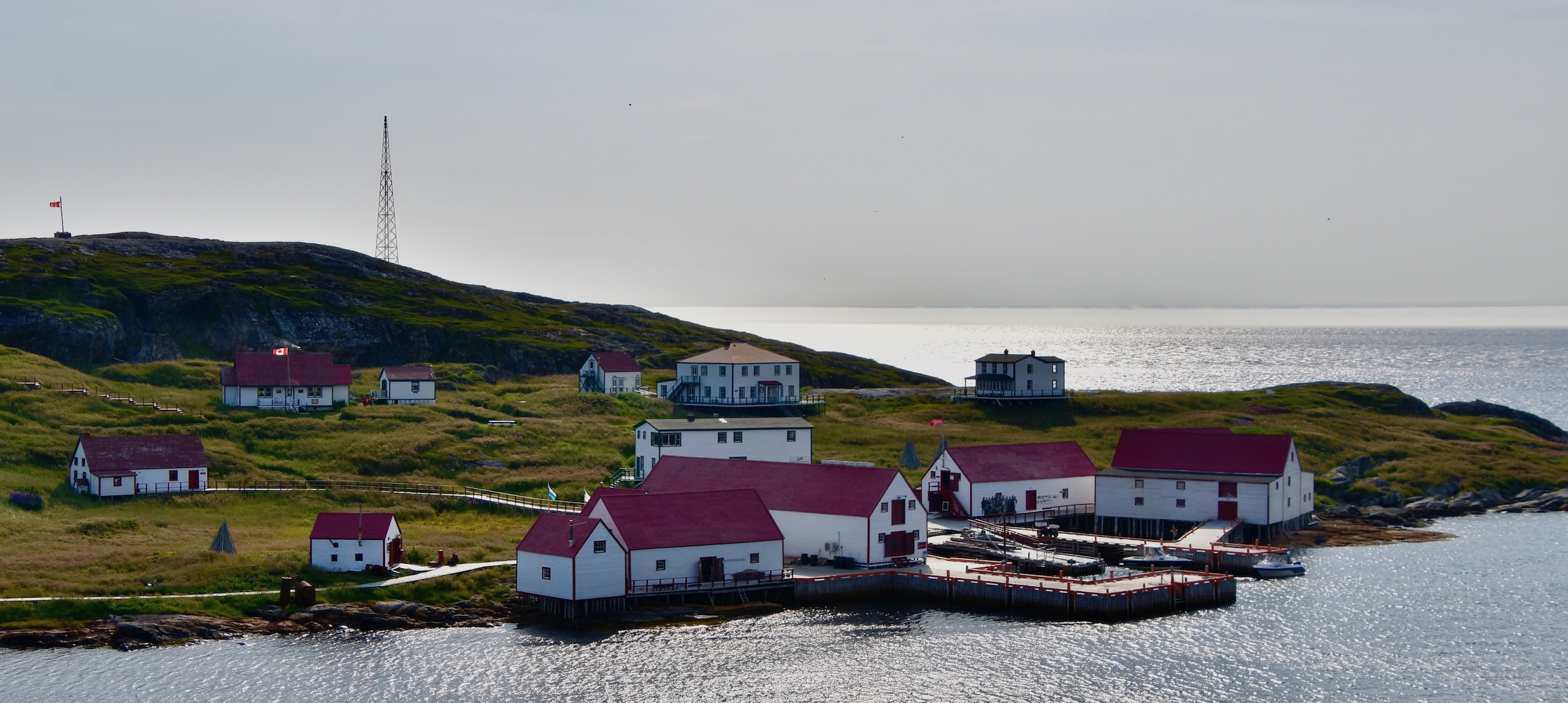
This is the landing wharf where you will disembark and your luggage will be transported to whatever type of accommodation you have selected.
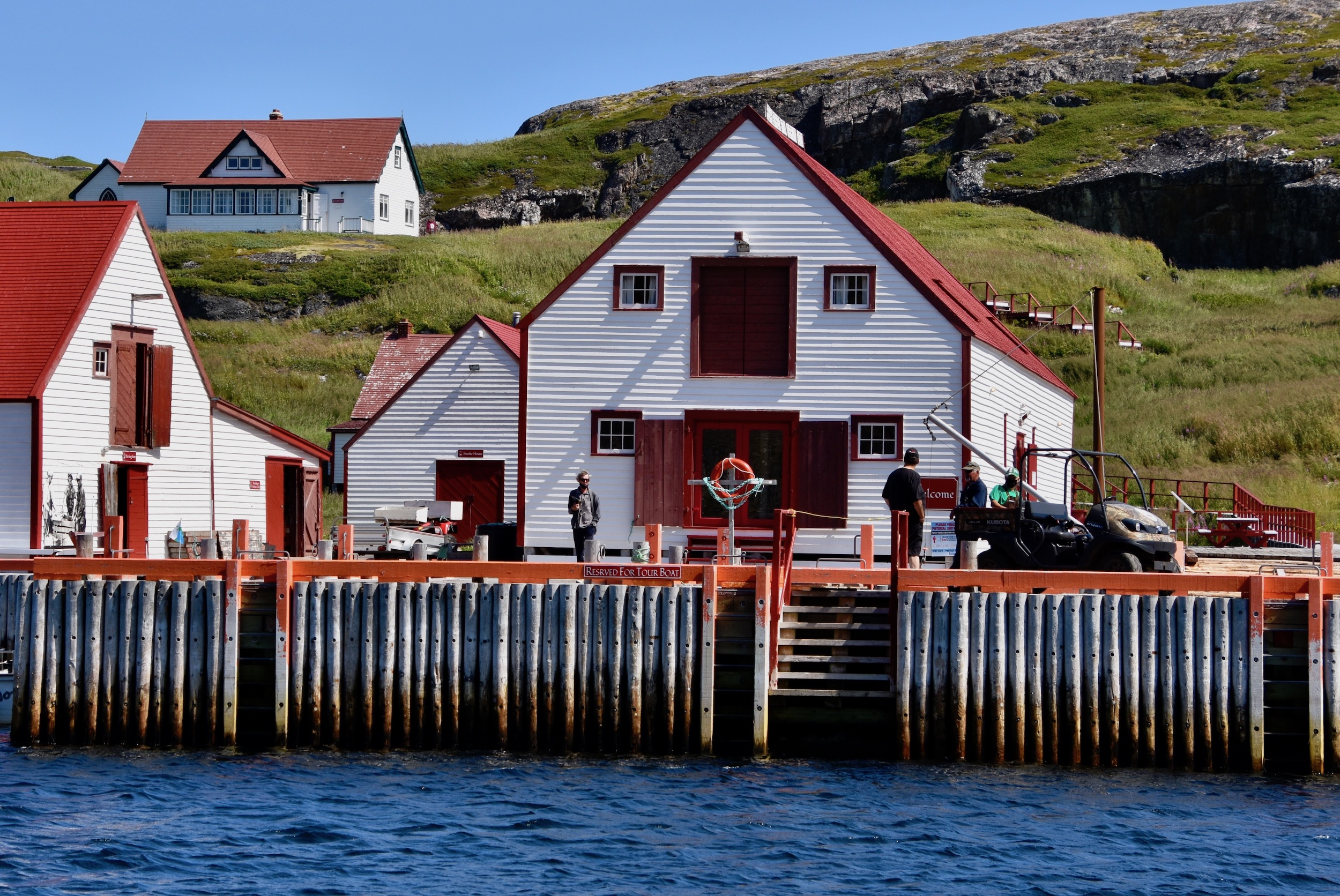
I wish I was a better writer and I could convey the sense of wonder that overtakes you as you set foot on this magical place, but suffice it to say, you will not be disappointed. Check in is done at the General Store which is just up from the wharf. This also where you will find the only telephone on the island. There is a lounge on the top floor that does have wifi which is spotty. You come to Battle Harbour to get away from the nagging necessities of everyday life like email and Netflix.
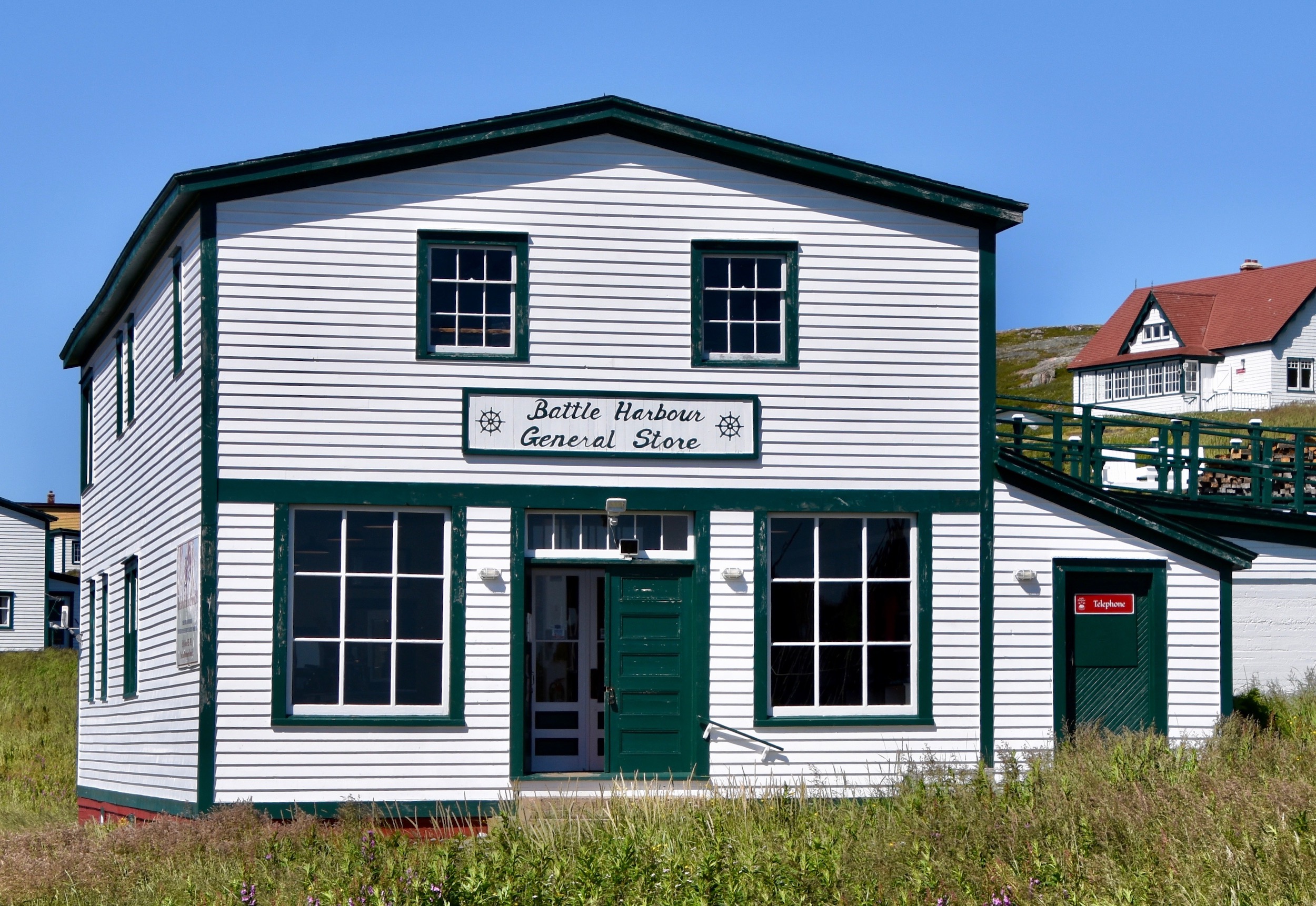
You will have about twenty minutes to freshen up in your room before lunch is served at 12:30.
The Earle Suite
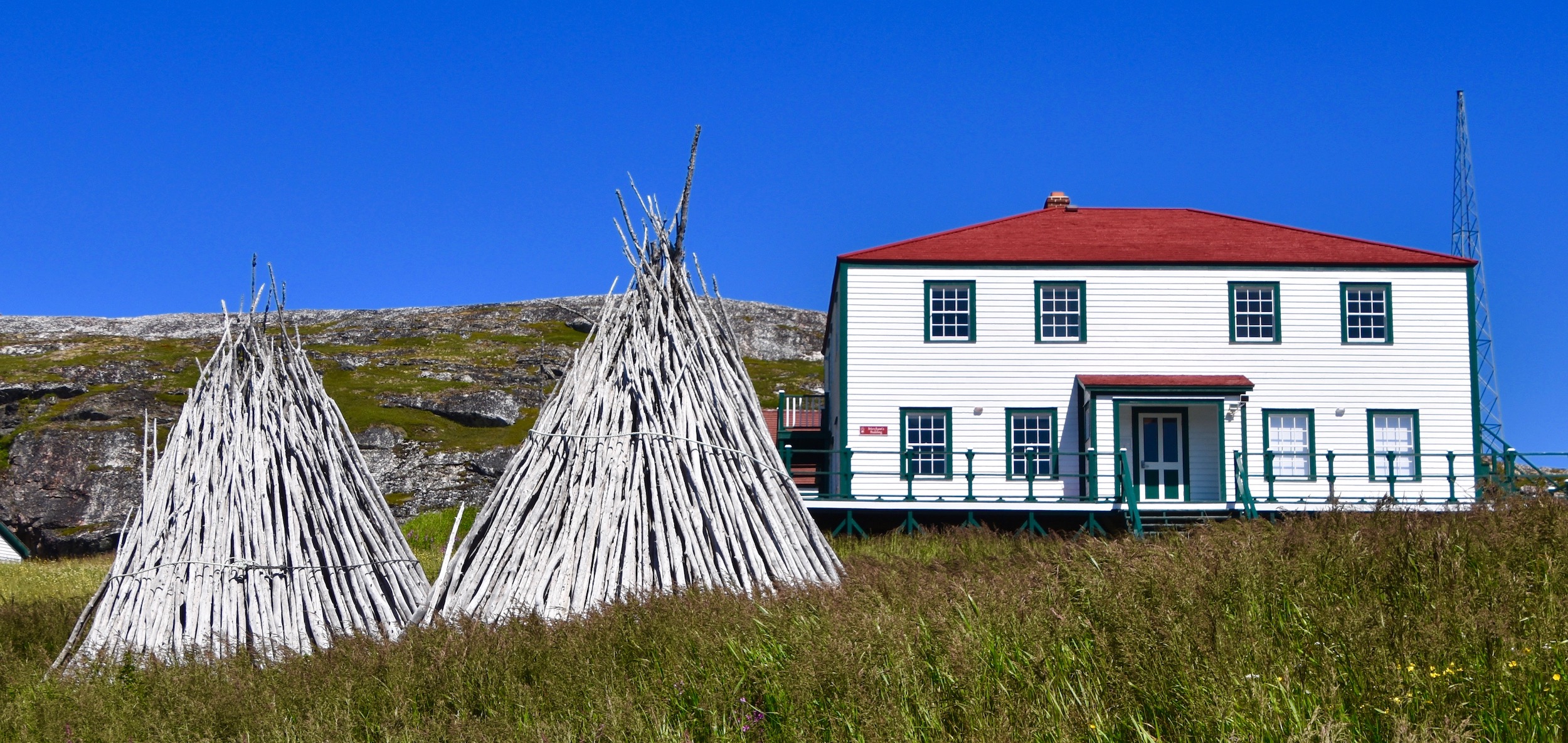
The first time I visited Battle Harbour I stayed in the cook’s bedroom in the bunkhouse. This time I decided to splurge and opted for the Earle Suite which is on the ground floor of the Merchant House shown above. It was a good decision.
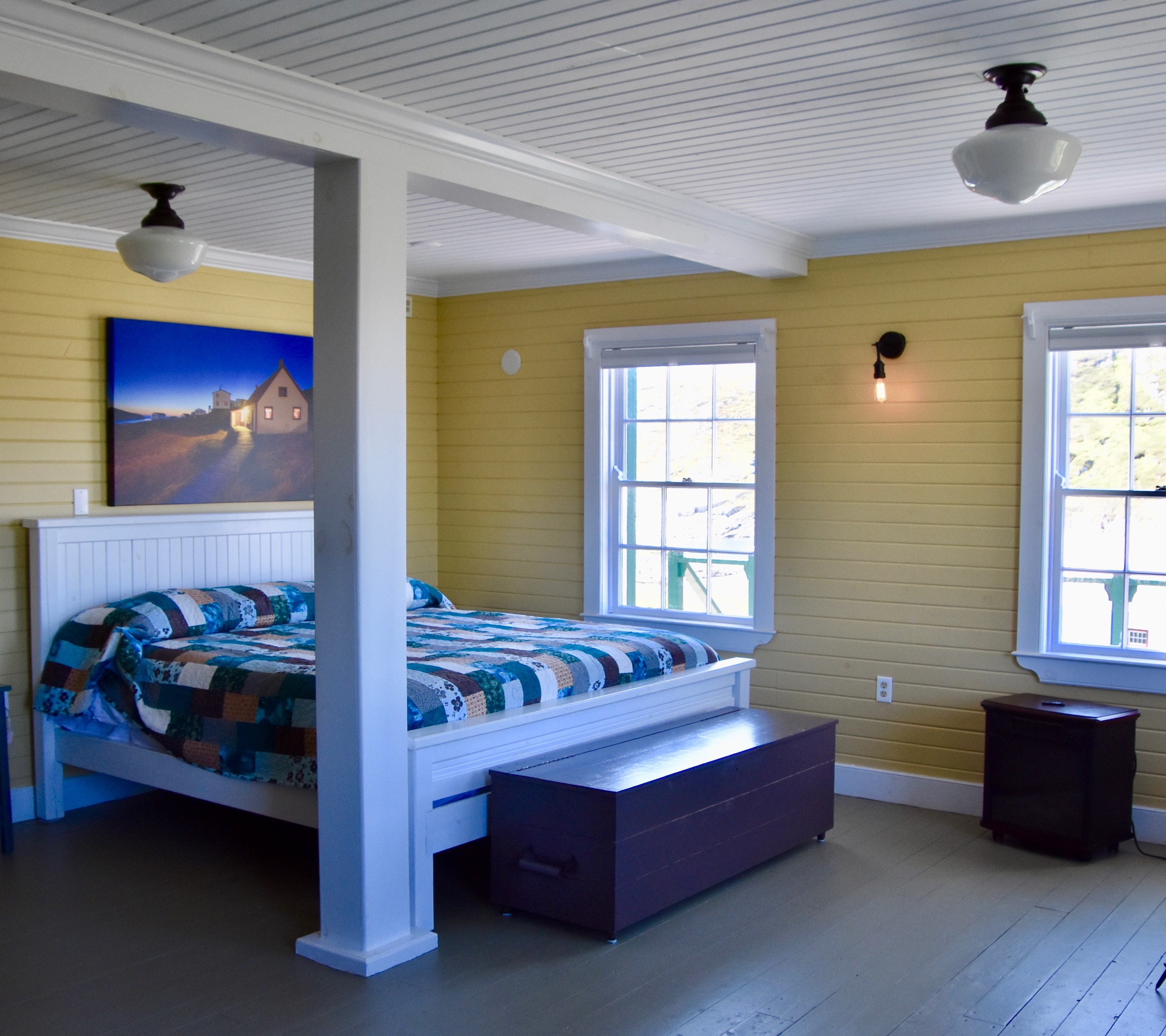
It was a huge airy room with a wood stove which we did use.
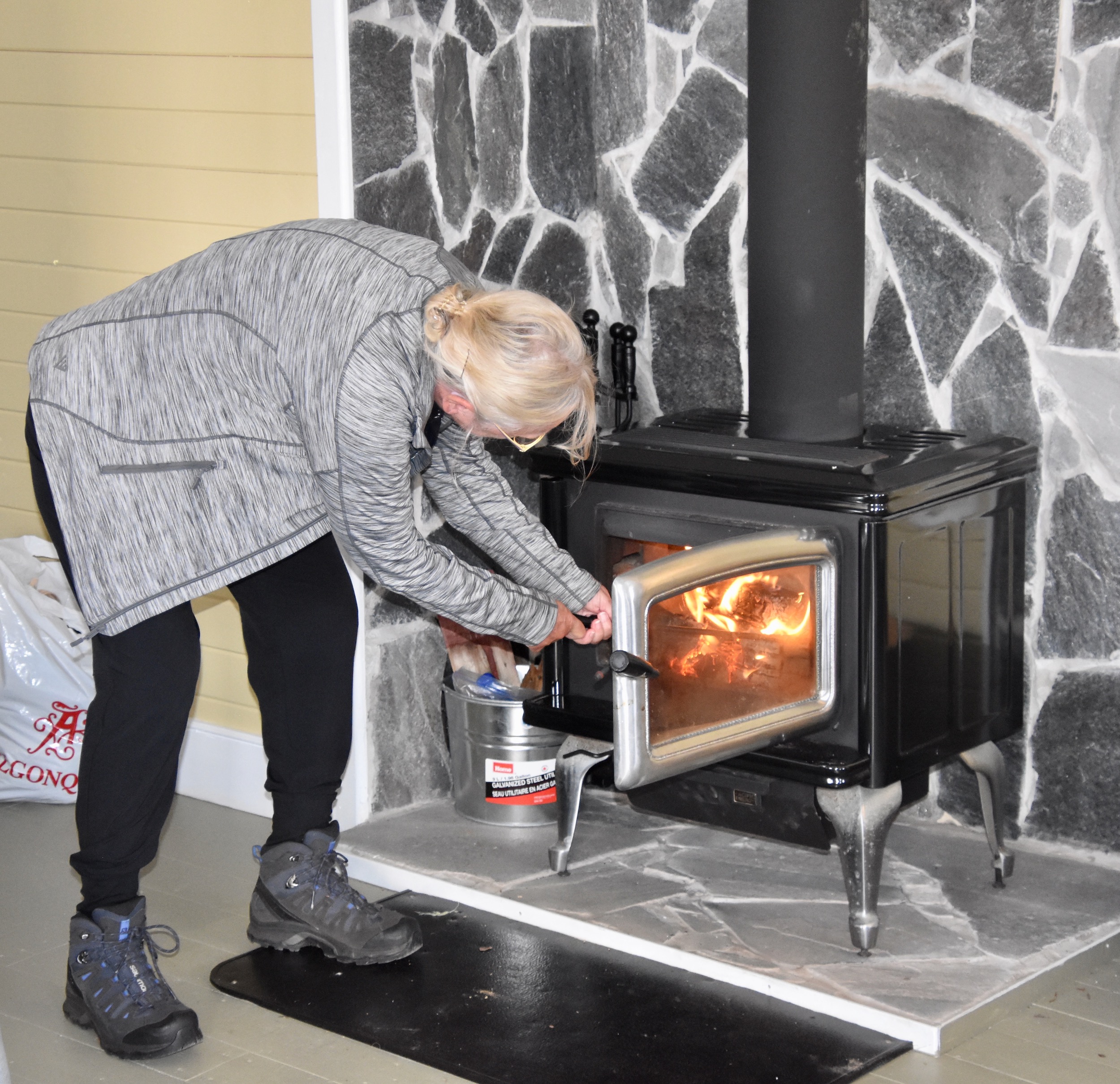
It also has a great free standing tub as well as a shower.
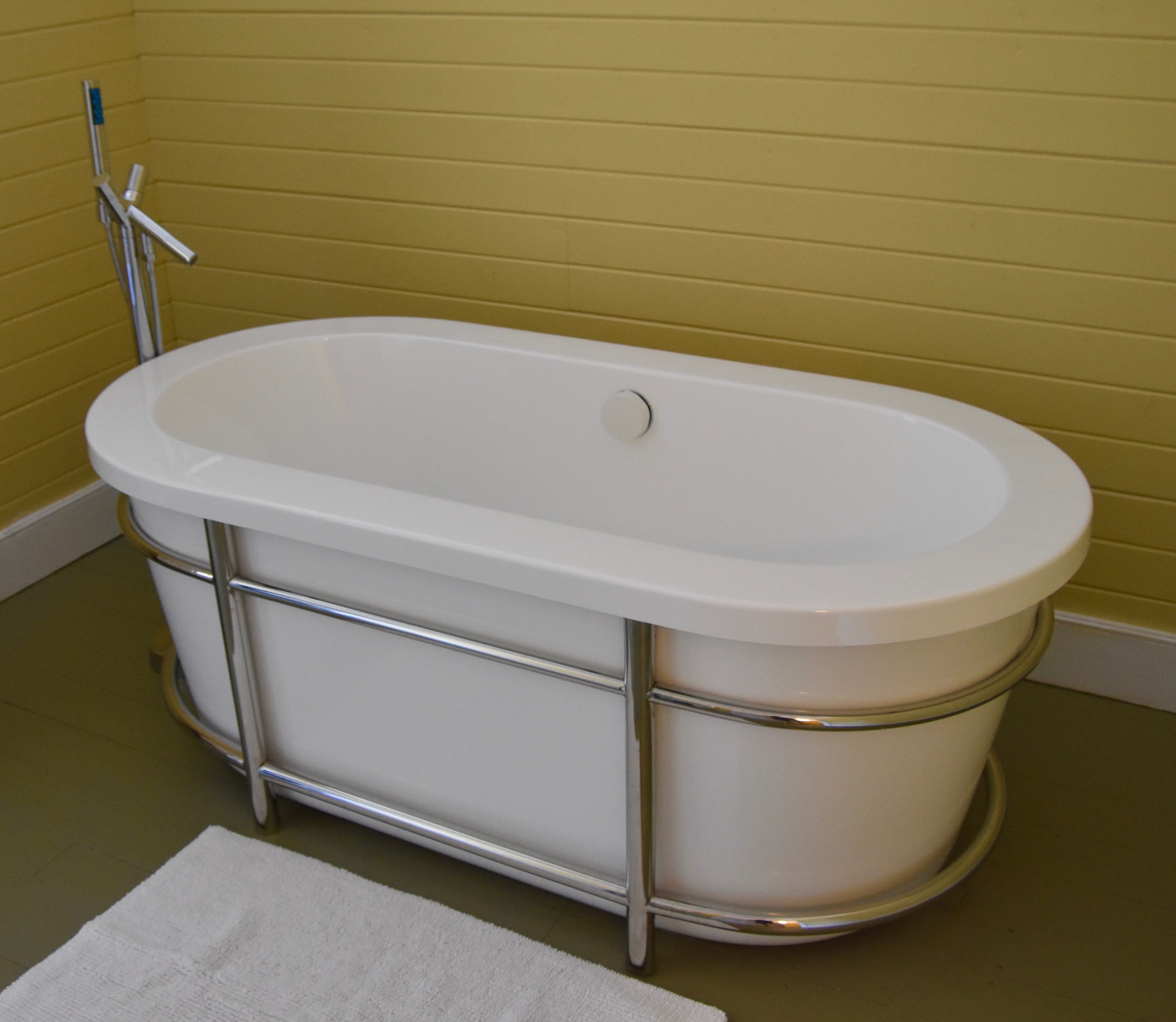
Some very comfy swivel chairs.
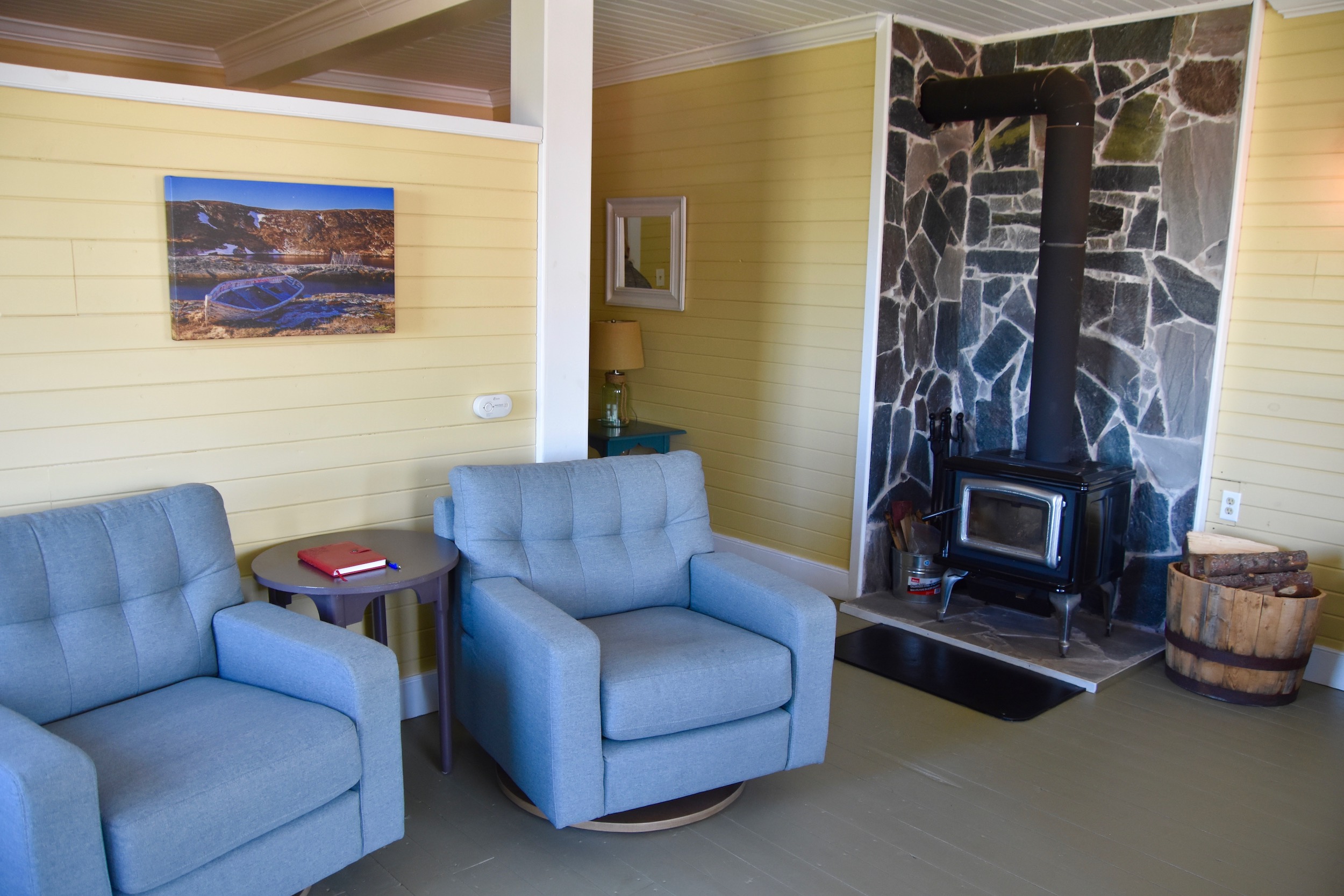
Most important of all, it has great views of Battle Harbour.
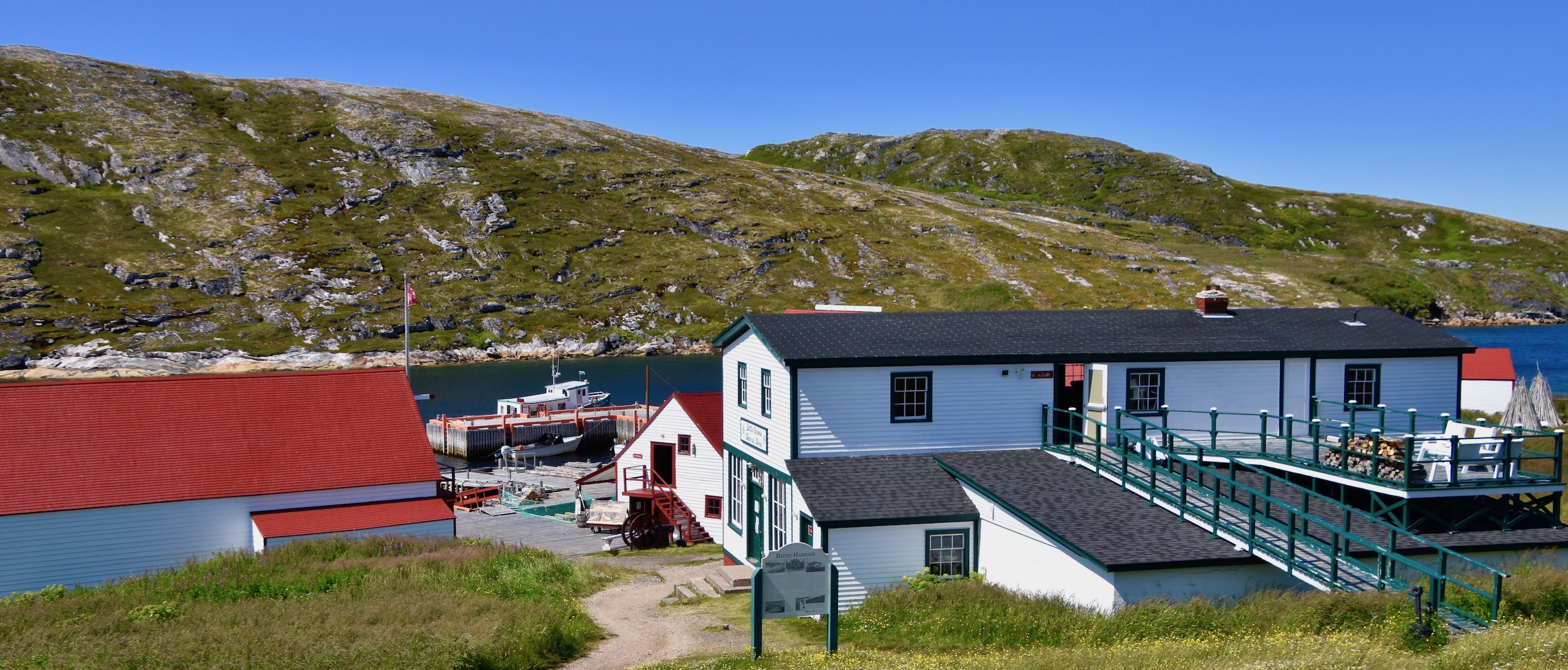
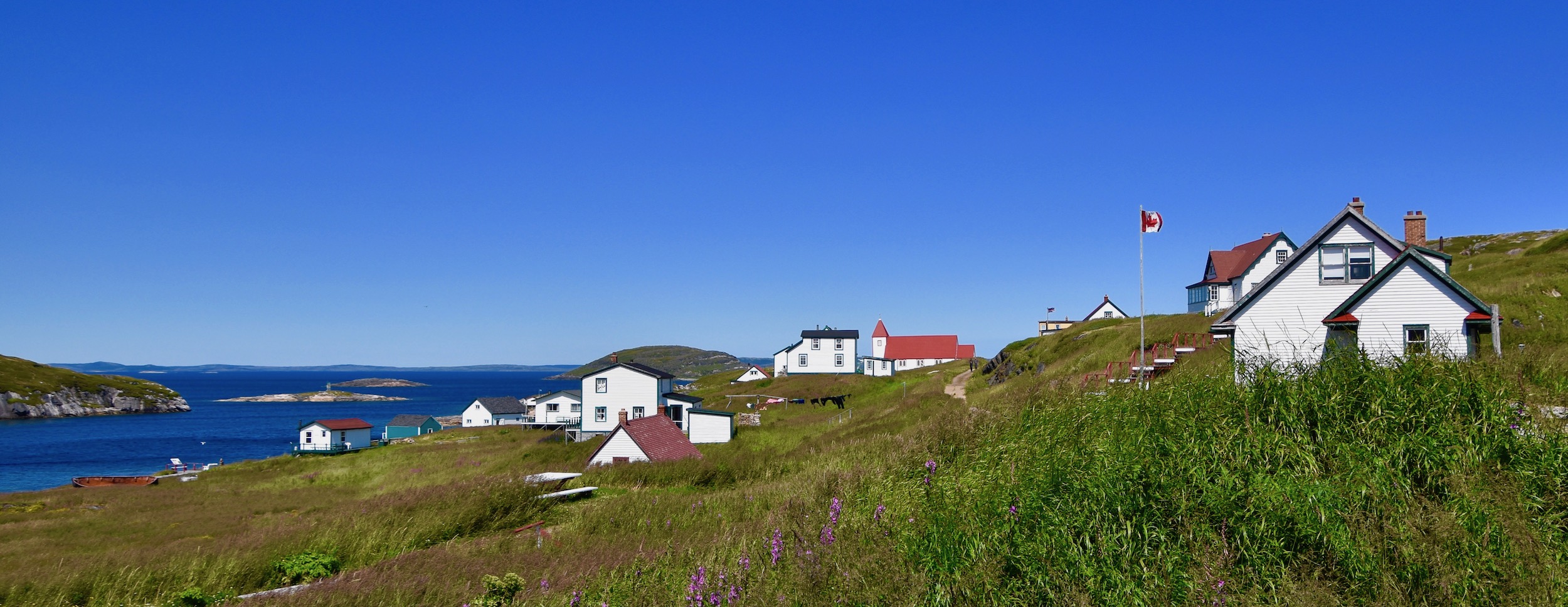
Three meals a day are served in the dining hall where you be assigned a place for the duration of your stay.
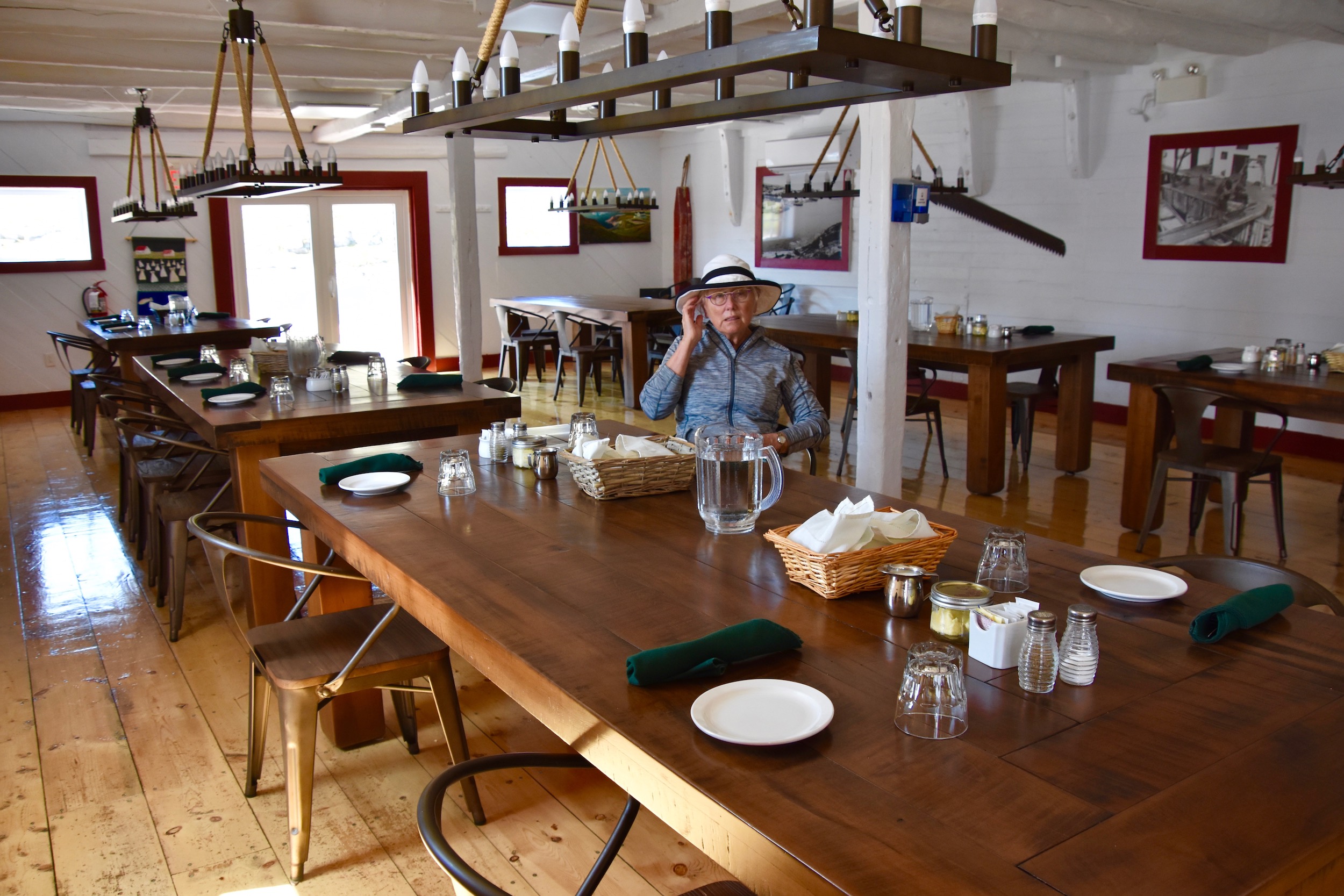
The first thing you see on entering the dining hall is perhaps the most iconic photo ever taken at Battle Harbour. This is three year old Victor Crowley standing beside two of the biggest codfish you can imagine. It’s hard to believe that this is how large these fish were before we humans decimated them. Sadly Victor was killed in a hunting accident when he was 21 and is buried in one of the two cemeteries on Battle Harbour.
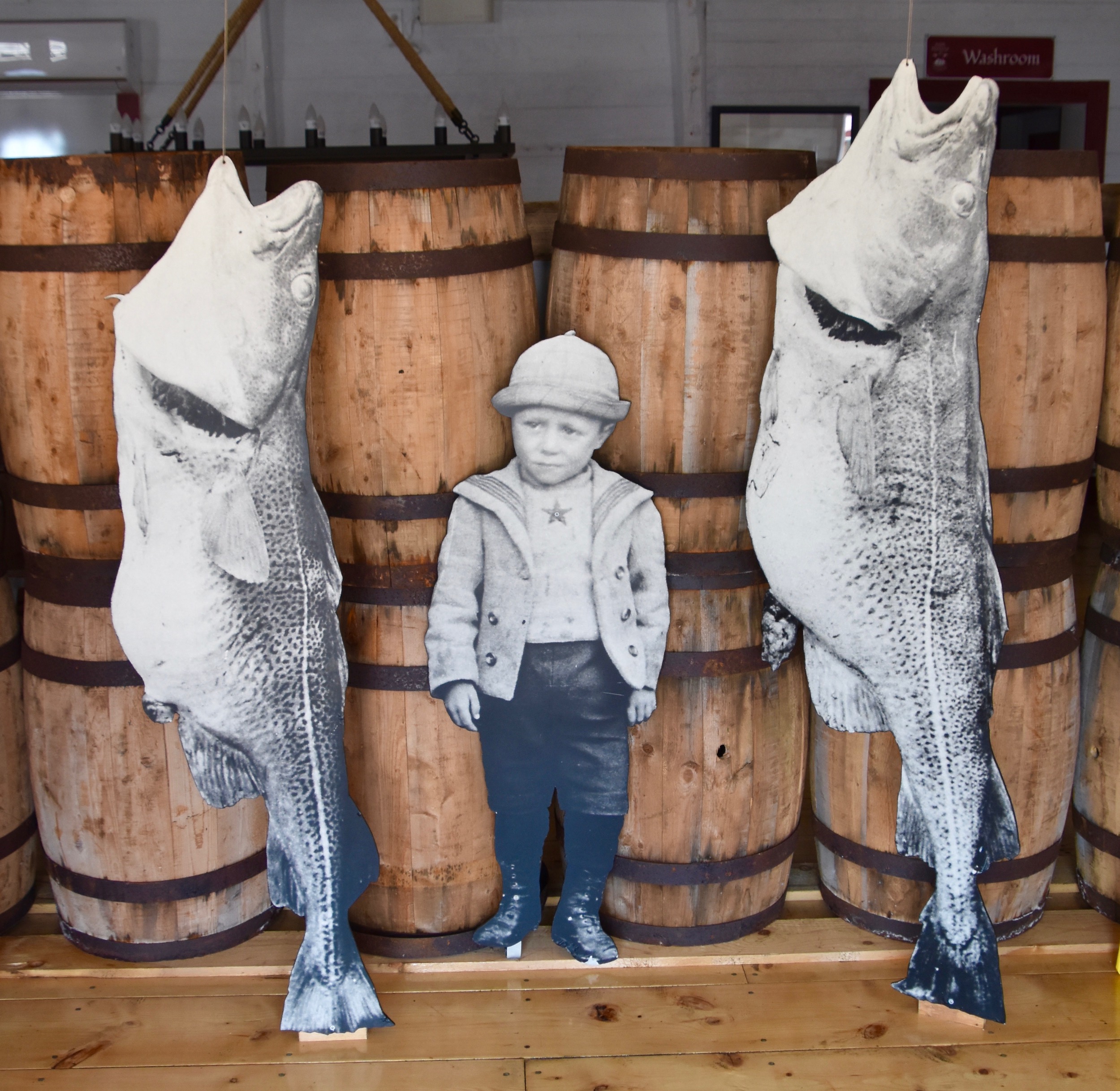
The meals at Battle Harbour are unpretentious and hearty, using local ingredients such as in this seafood chowder with tea biscuits.
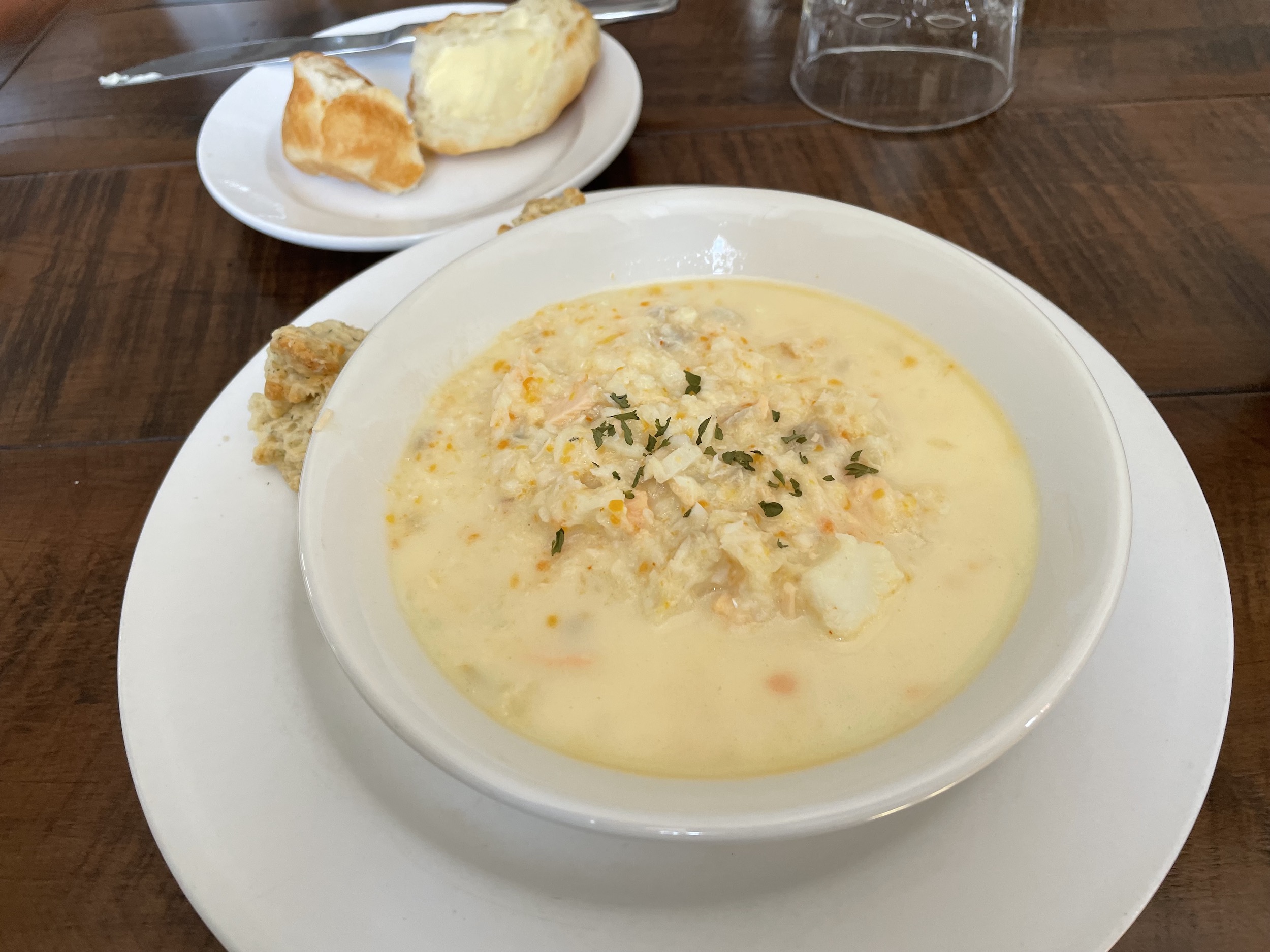
And this bakeapple cobbler.

After lunch there is a guided tour of the historic district led by one of the last people to actually grow up in Battle Harbour, in our case Cyril Lunnen who lived here until the resettlement program moved his family to Mary’s Harbour. He still lives in the old home while the Battle Harbour tourist season is open.
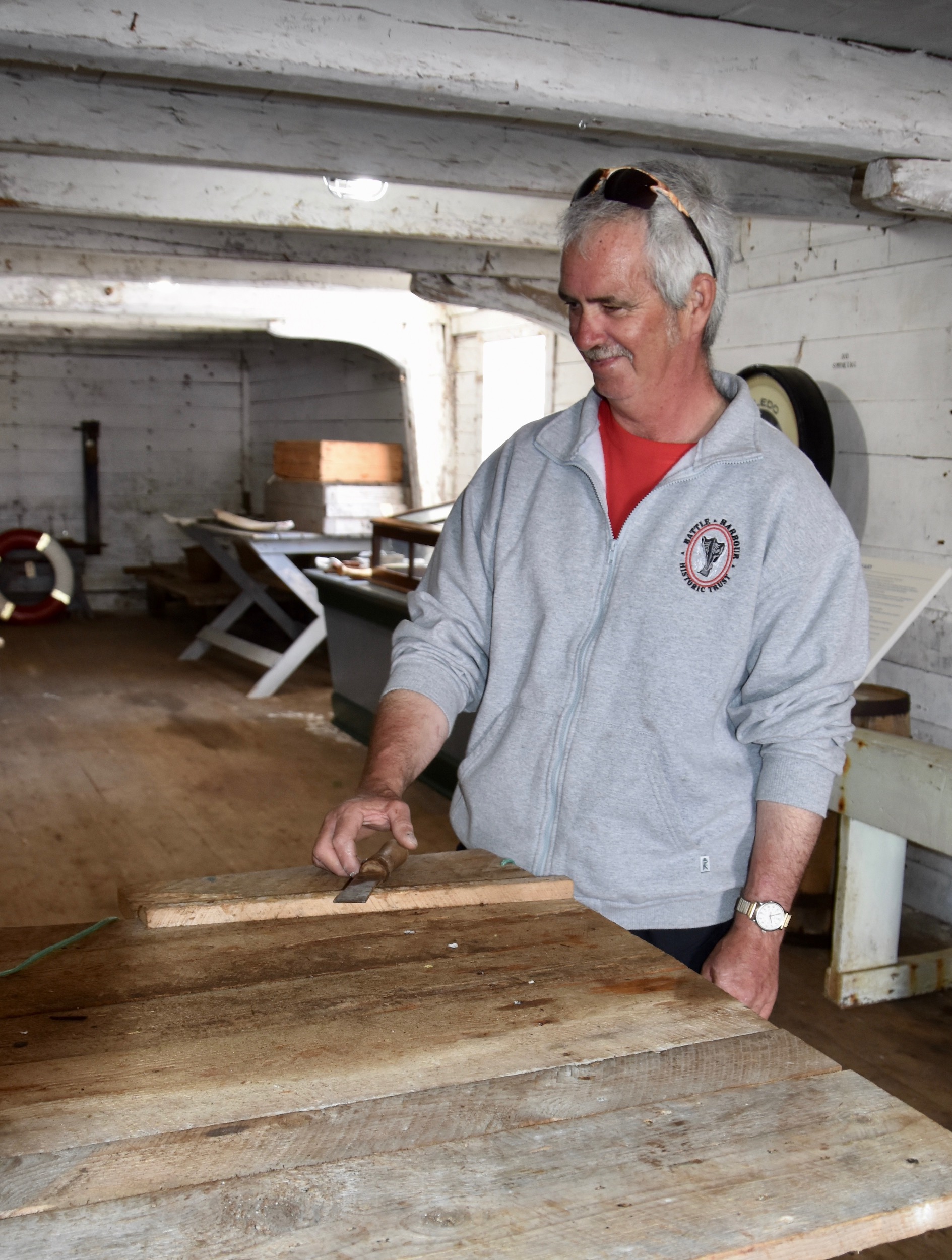
This is the oldest building in Battle Harbour dating back to 1775 and it was used to store salt pork which along with fish was a staple of the diet of the Battle Harbour residents. Note the black and white cut out of a workman beside the building. There are a number of these throughout the historic district that add authenticity to the Battle Harbour experience.
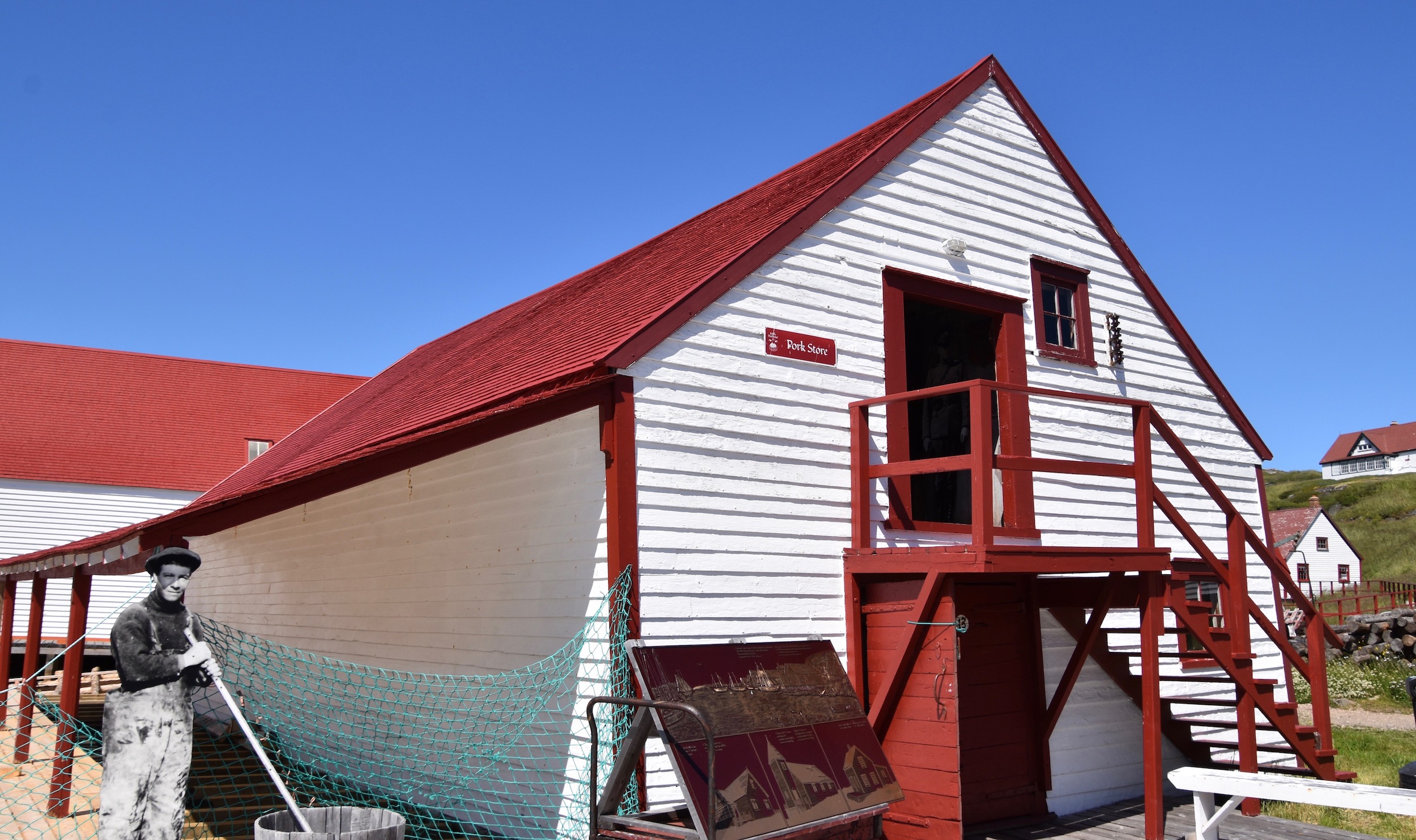
The interior, with its rough hewn wooden beams is exactly as it was built over 240 years ago.
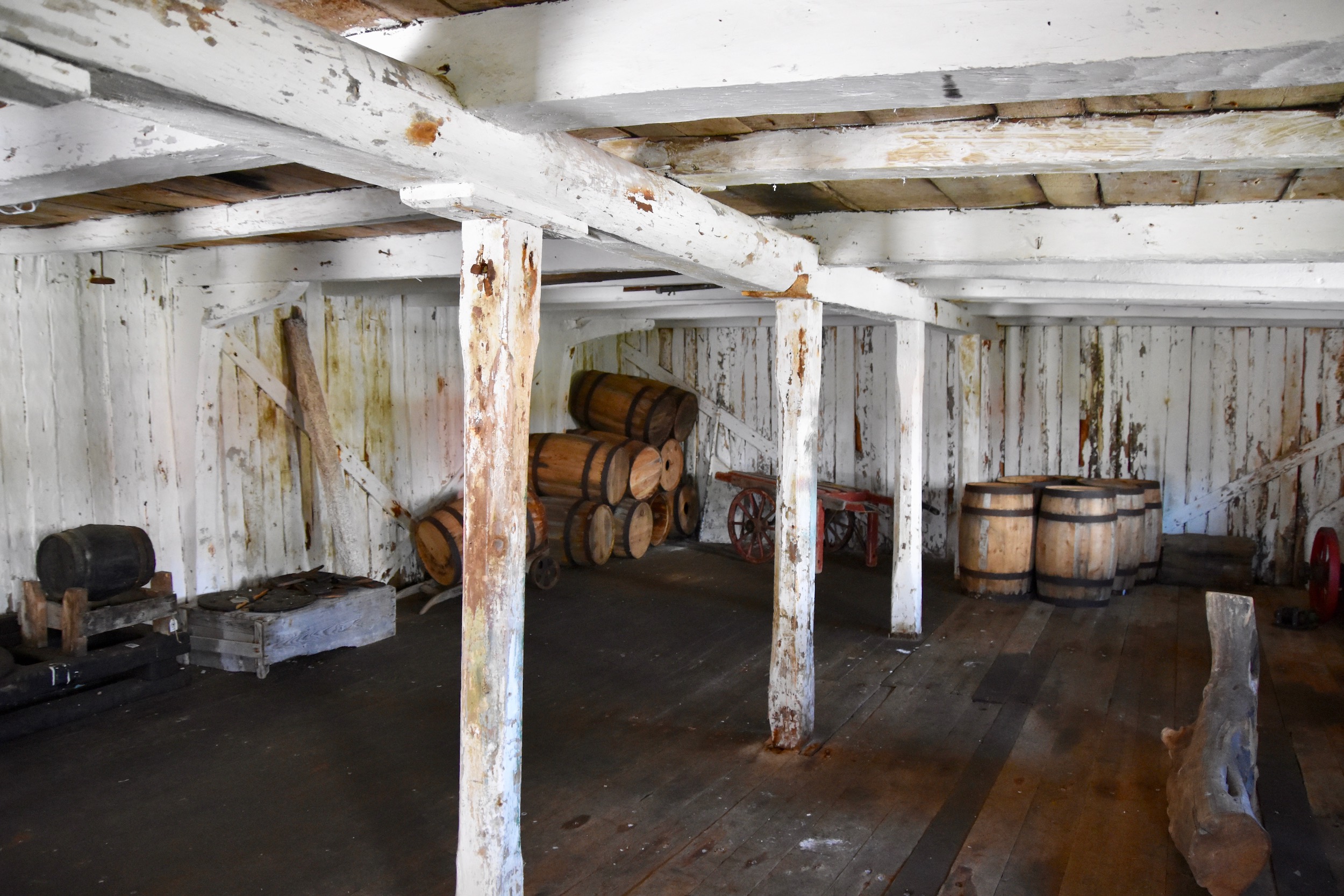
This is the Isaac Smith house, the oldest residence in Battle Harbour dating from about 1830 and described as a typical ‘biscuit box’ design common in Newfoundland and Labrador outports.
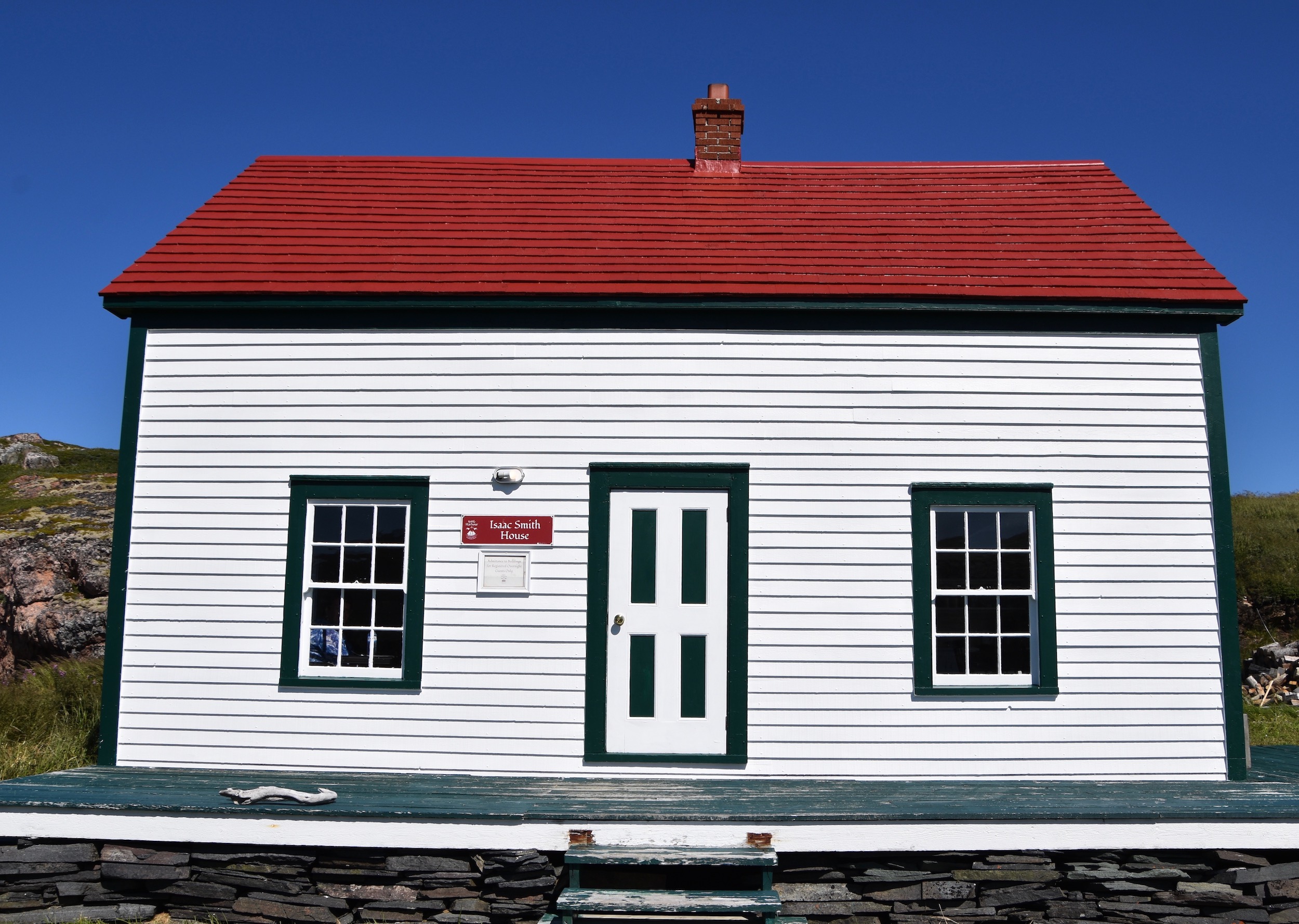
Battle Harbour operated on a system that involved no cash changing hands, but rather on merchants providing credit to fishermen to buy the goods they needed to get through the fishing season and paying off the debt by selling their catch back to the merchants. The system has been much criticized as being exploitive of the fishermen by making sure they never had any actual money, but while this is true, there is a definite romanticism associated with life in an outport that is easy to fall into at Battle Harbour.
Cyril explained that at the beginning of the season the salt building which is right on the waterfront, would literally be full to the rafters of salt that would be used to preserve the cod for shipment to Europe, the Caribbean and elsewhere. All told this building held 1.2 million pounds of salt when full.
These are salt carts used to haul the salt. Can you imagine trying to push one of these uphill from the wharf when loaded with salt? Talk about back breaking work.
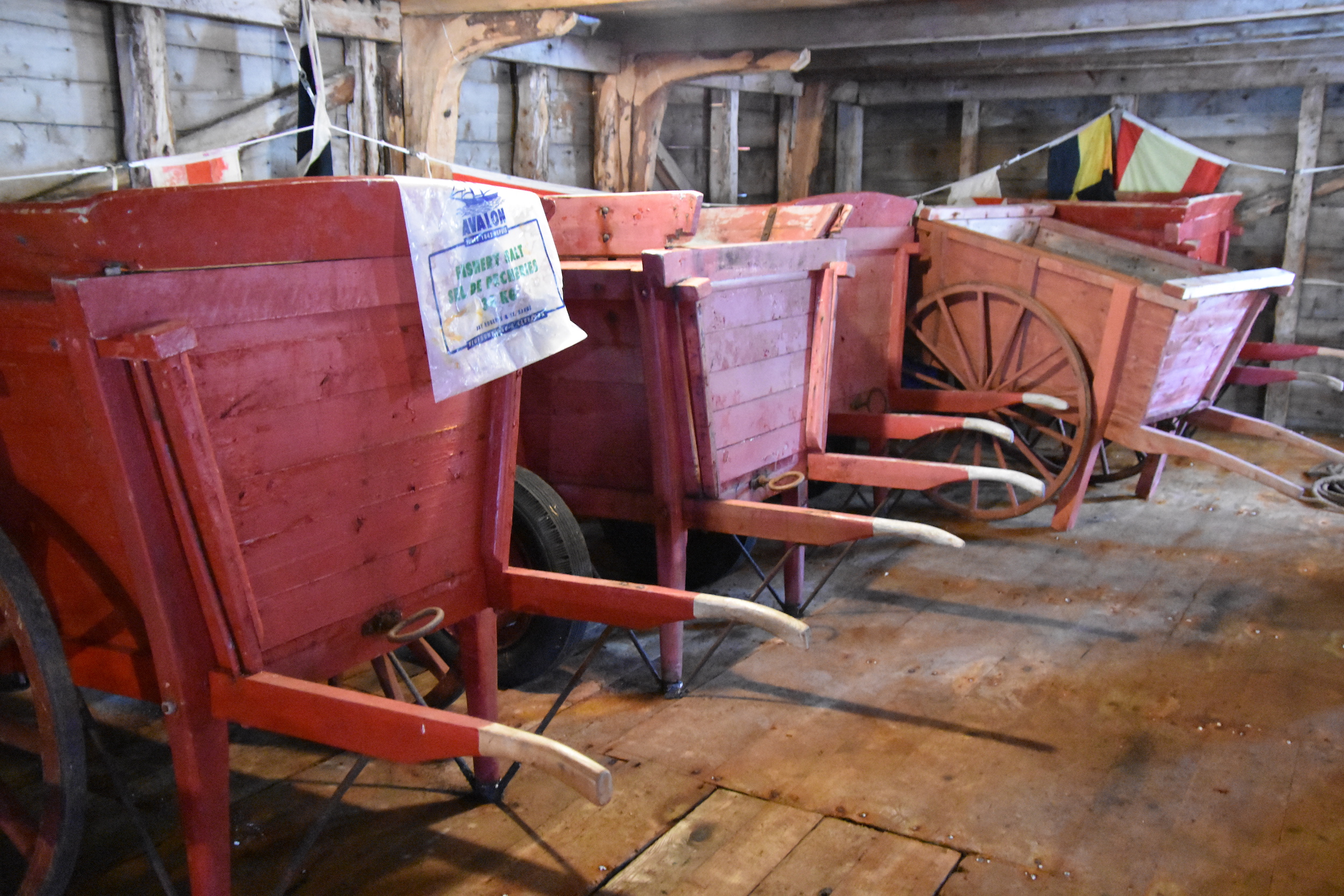
This is a model of a cod trap which, until I visited Battle Harbour, I had no idea even existed. Essentially it is very similar to a weir except that it is not permanently grounded, but rather just sits on the ocean floor with the sides held up by buoys. The fish run into the netting and then follow it into the trap where they swim around in circles until the trap is pulled up. It was invented in Bonne Esperance, Quebec in the 1860s by a Captain Whitely and was so successful that by 1911 there were thousands of cod traps in operation off the coast of Labrador alone.
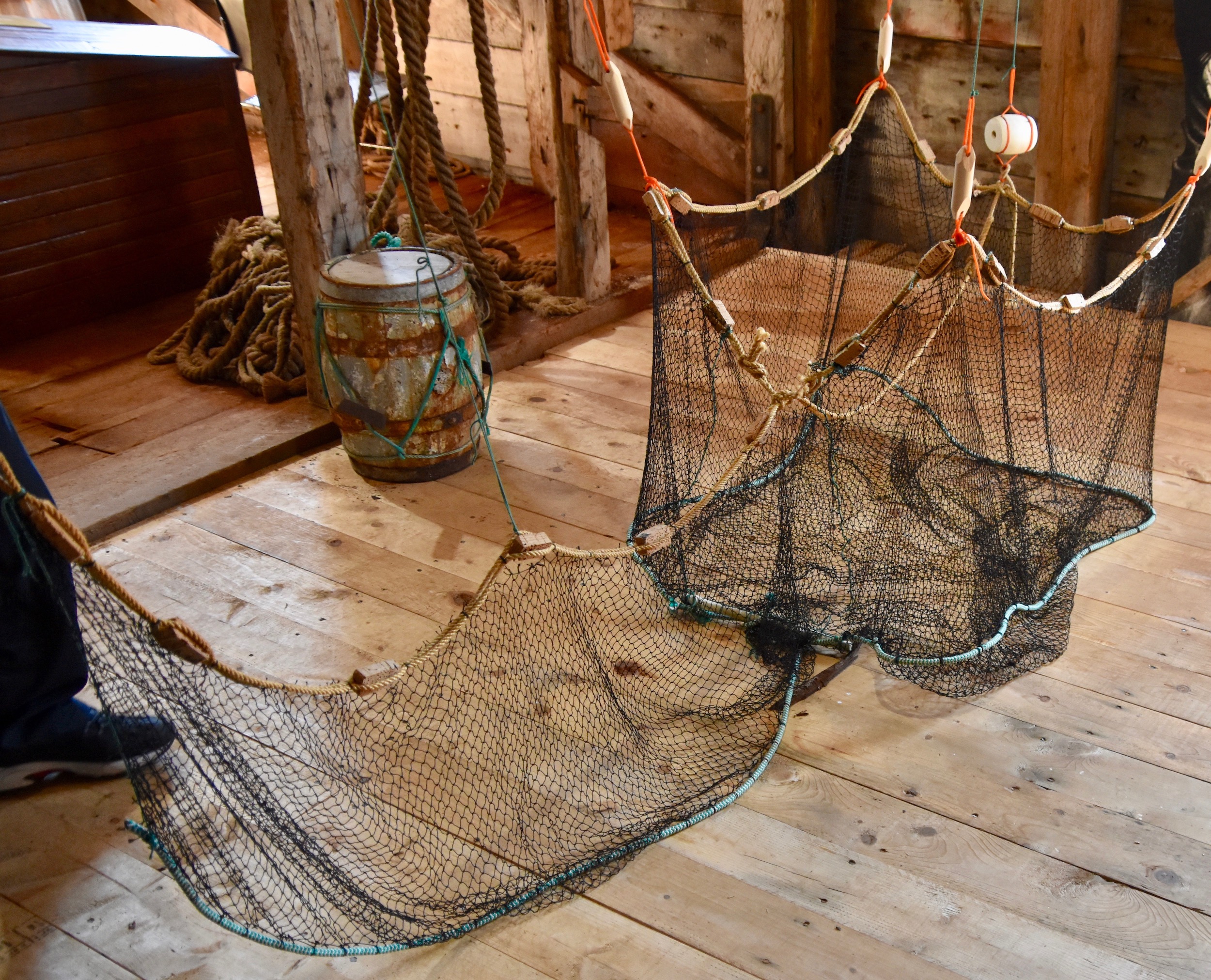
Here is another thing I did not know existed until visiting Battle Harbour and I confess this one gave me the creeps. It is a seal net. While I knew that cod weren’t the brightest creatures in existence, I was surprised to learn that seals would get themselves entangled in these nets and drown, but apparently they did and the seal fishery was a prominent secondary industry in Battle Harbour.
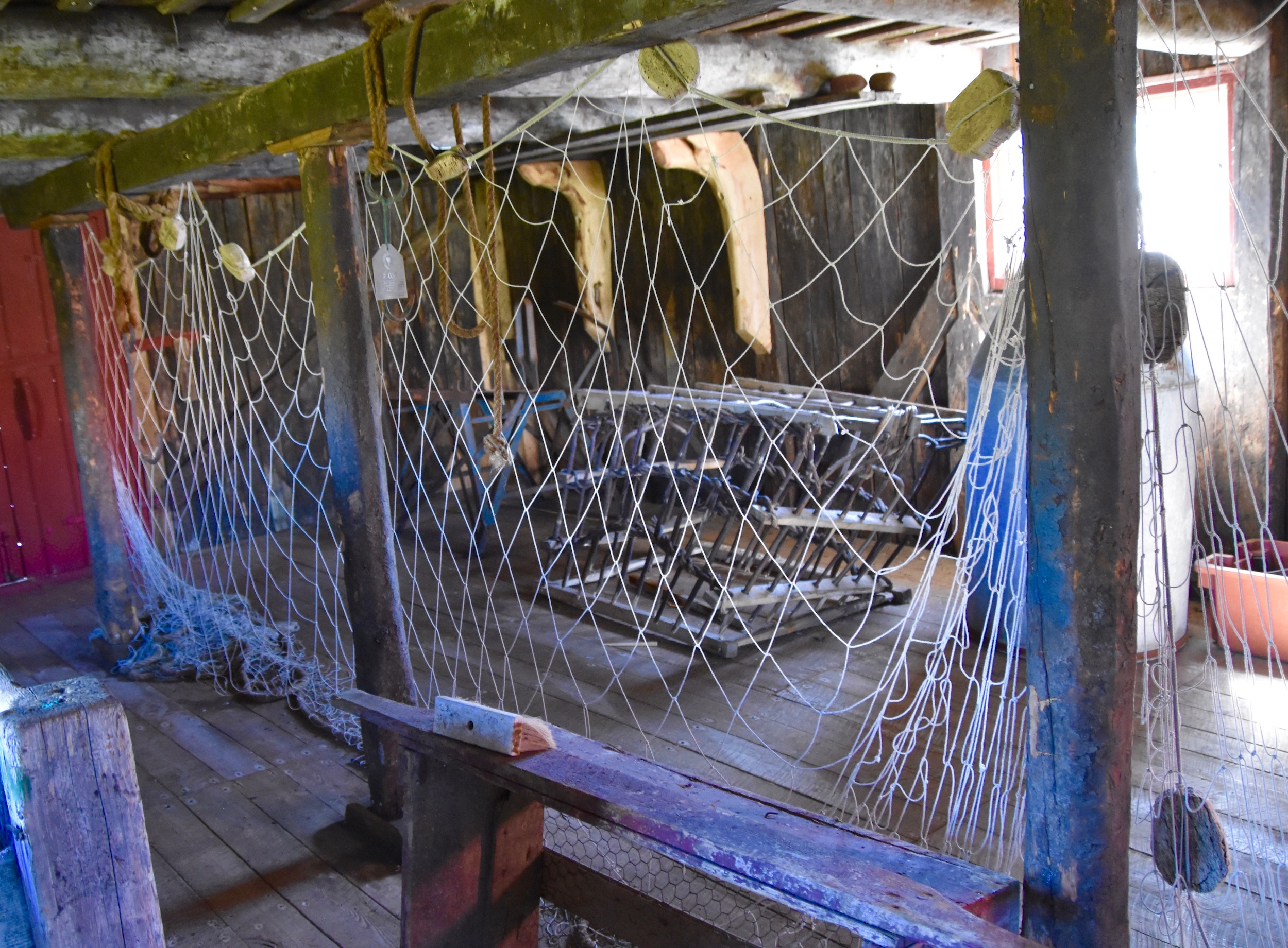
This is a seal fat pressing device. The seals would be skinned and the fat put through this press to extract the oil. That’s probably more than you want to know about this aspect of the Battle Harbour economy.
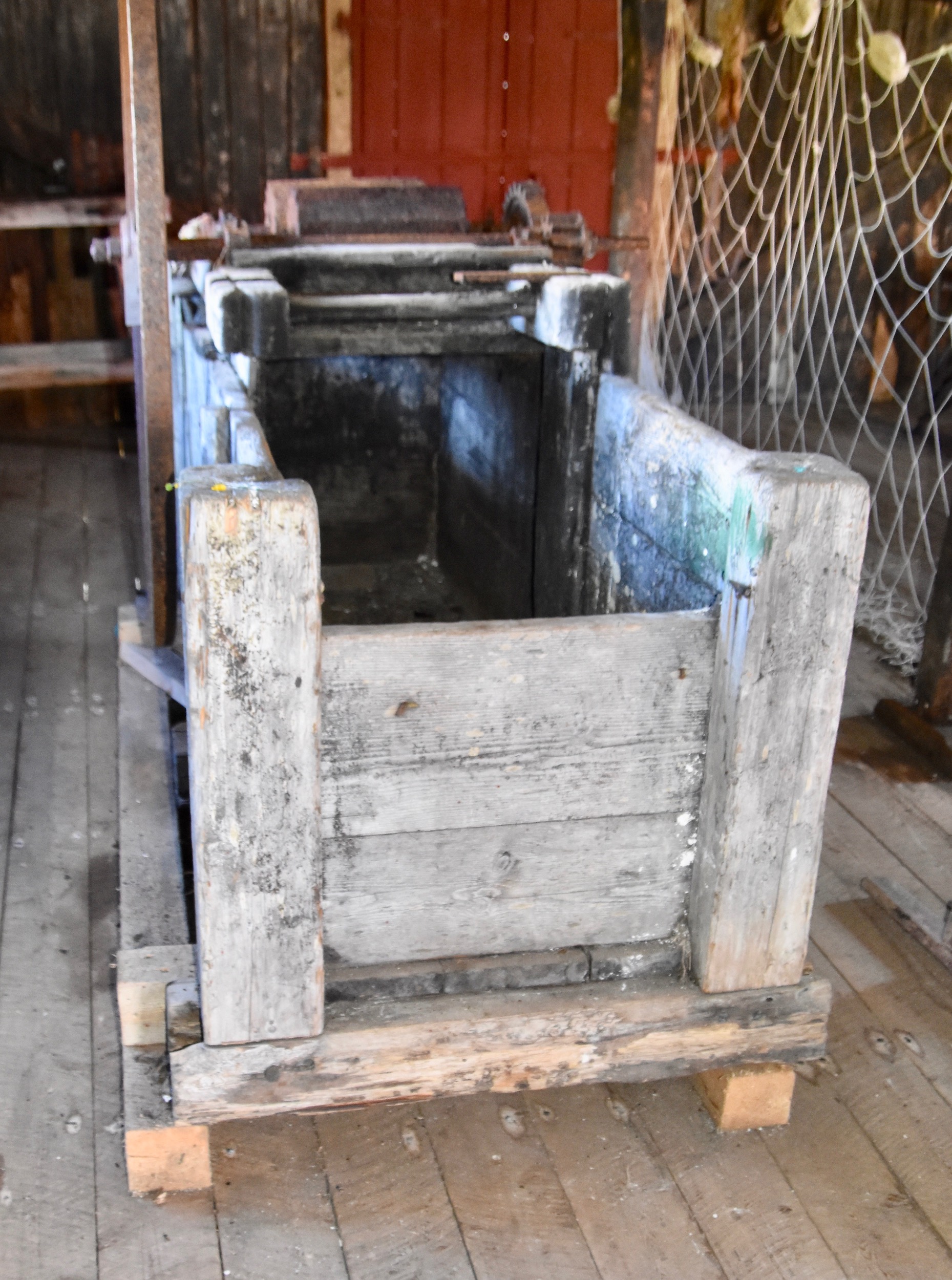
This is a life size photo showing the men of Battle Harbour well over a century ago. Can you spot little Victor Crowley?
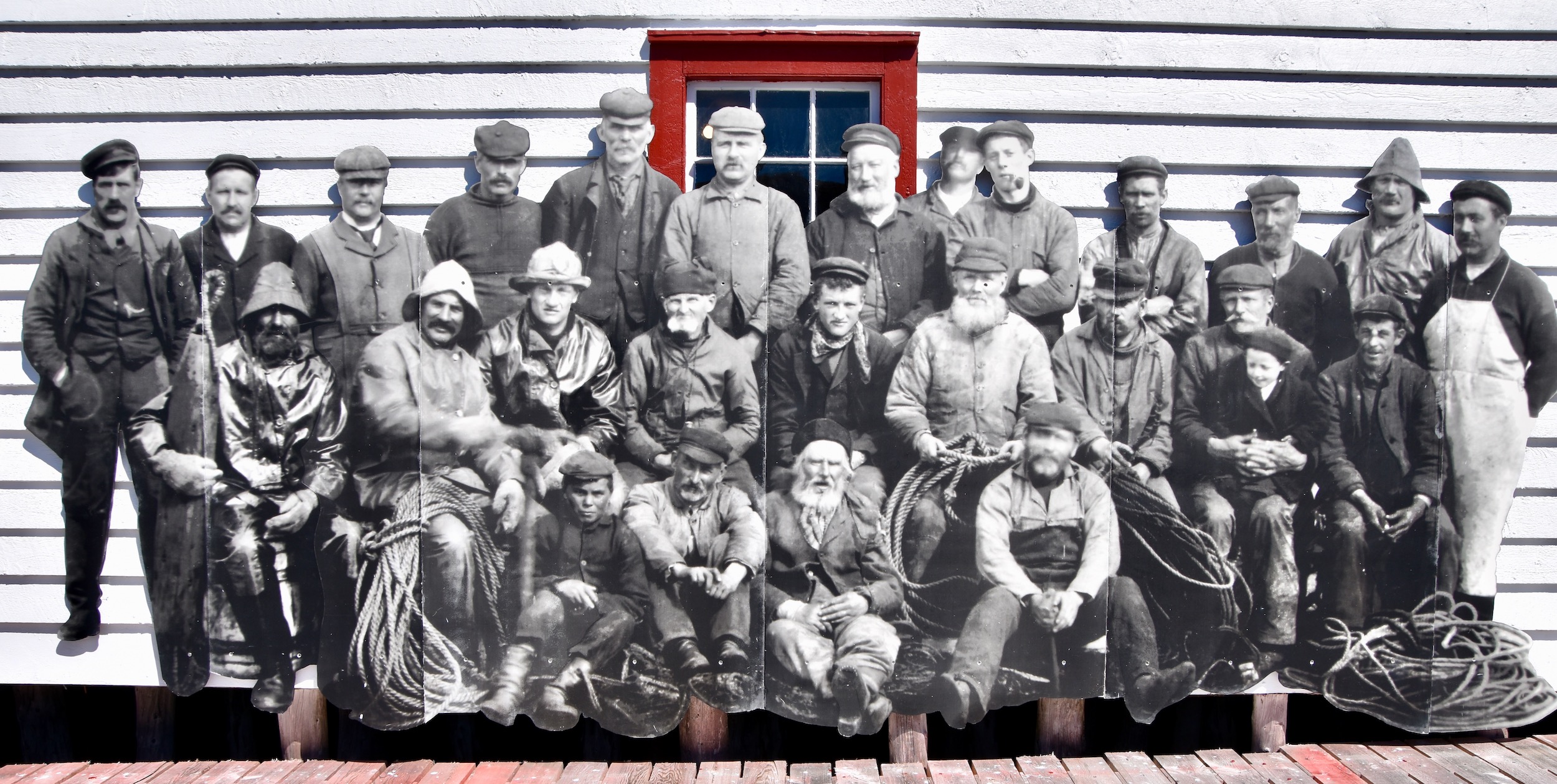
The tour then leaves the fishing related buildings and heads out on what I call the Main Street of Battle Harbour.
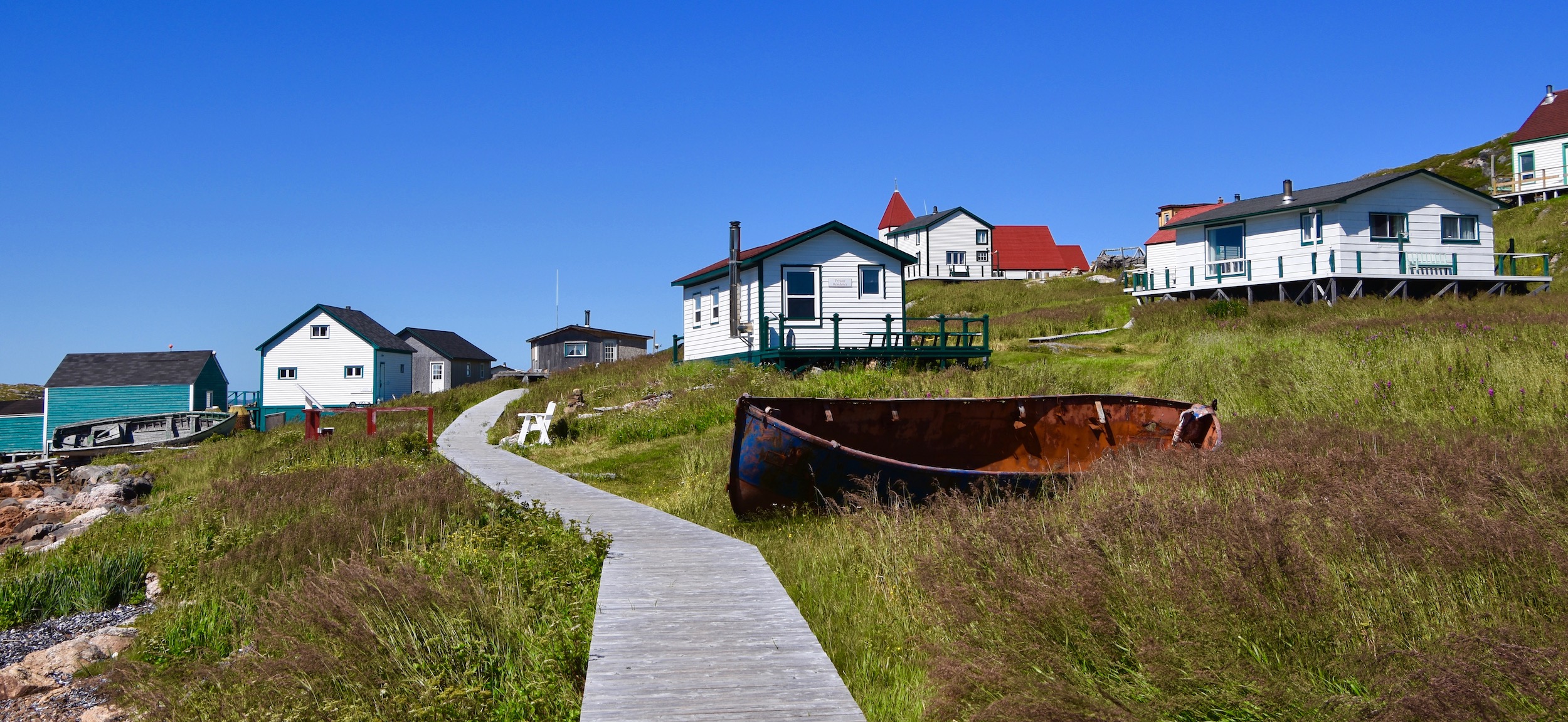
This is Saint James Anglican church, constructed in 1852.

This is the interior. Note the pot bellied stove in the middle of the aisle and the pews that have been truncated to allow passage without getting burned. This is something I’ve never seen before.
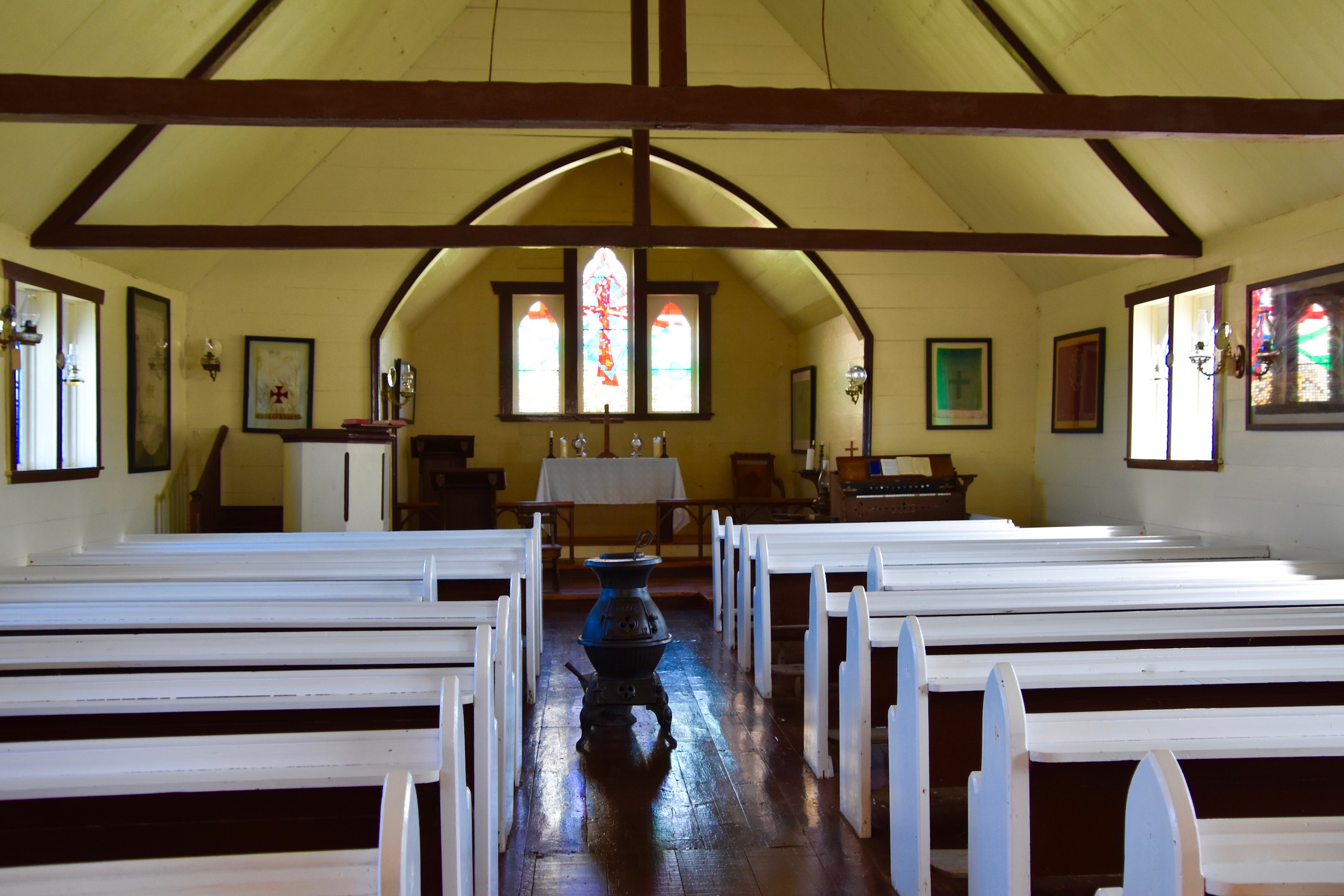
Newfoundland and Labrador has some of the most scenic outhouses in the country as I noted on the first day at Rose Blanche and this double seater at Battle Harbour is right up there with the best.
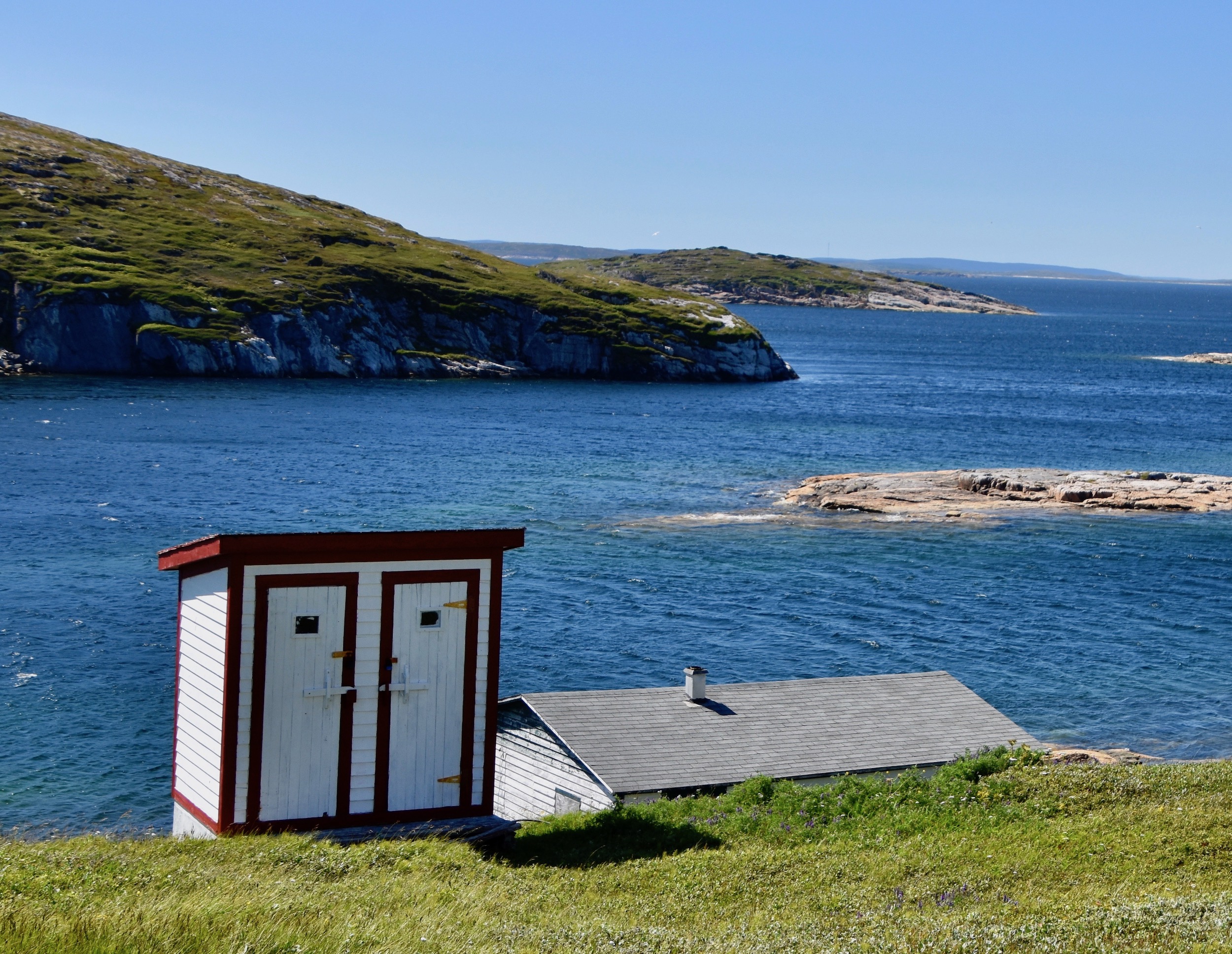
This is the Newfoundland Ranger Station at Battle Harbour. The Newfoundland Rangers were established in 1935 to provide policing and other services to remote outports. They were single men who were able to withstand isolation and physical challenges and despite lasting only fifteen years, are somewhat of a legend in Newfoundland and Labrador today. They were disbanded when the province joined Canada in 1949. Many of them then enlisted in the RCMP.
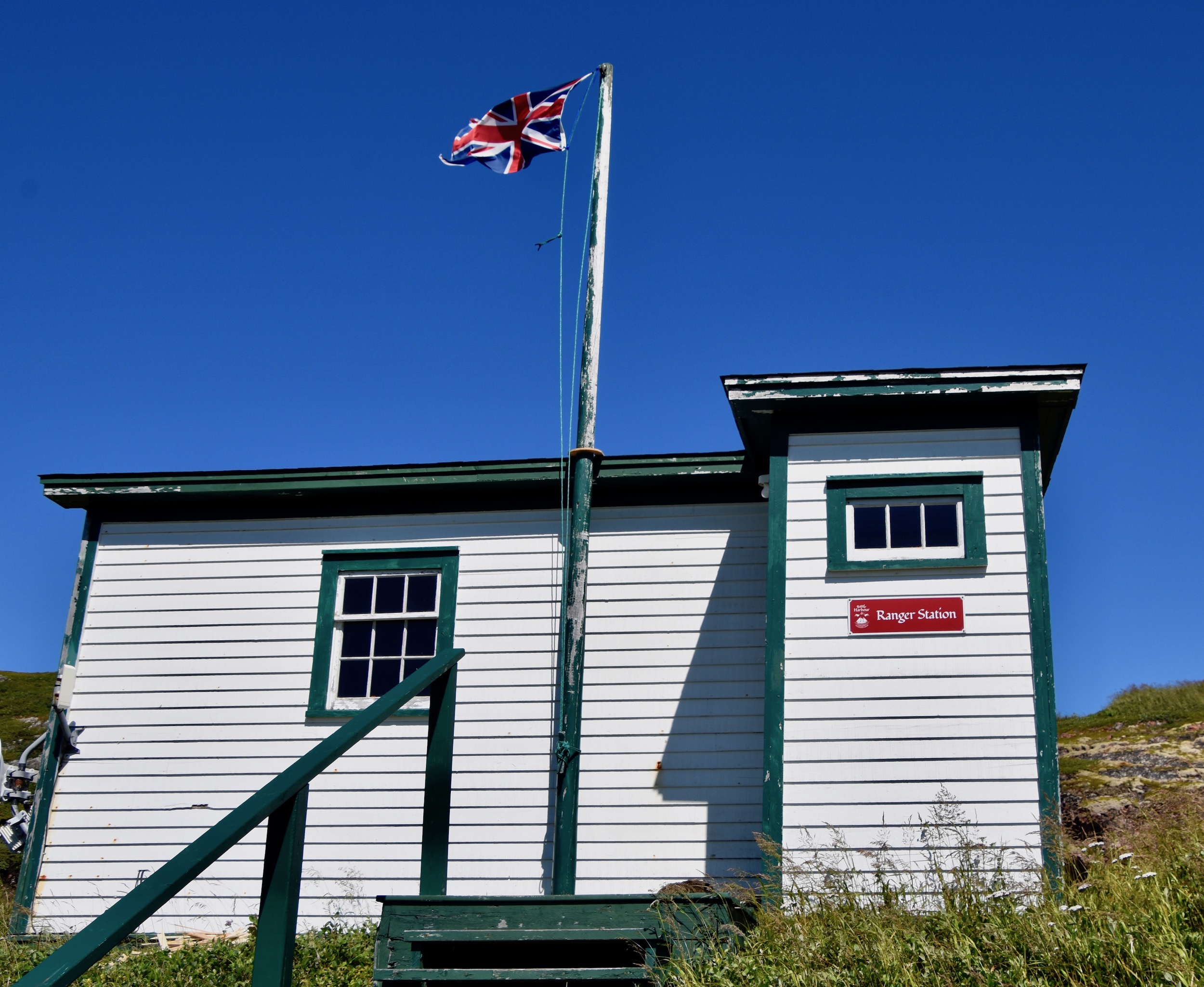
Speaking of the RCMP, this is the station that was built after confederation and was able to accommodate married members with families. This marks the final spot on the guided tour, but there is still much more to see in Battle Harbour.
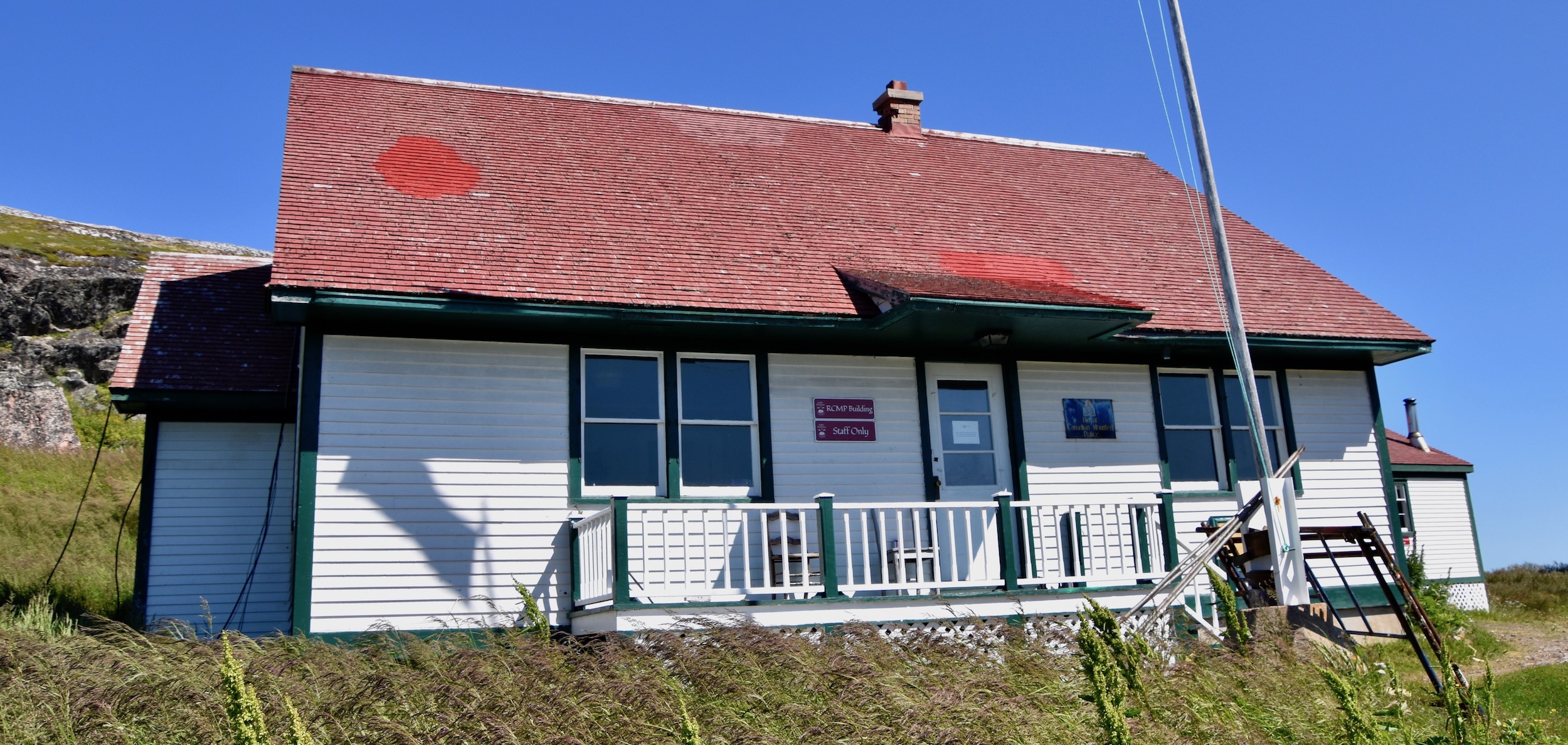
Battle Harbour Foot Path
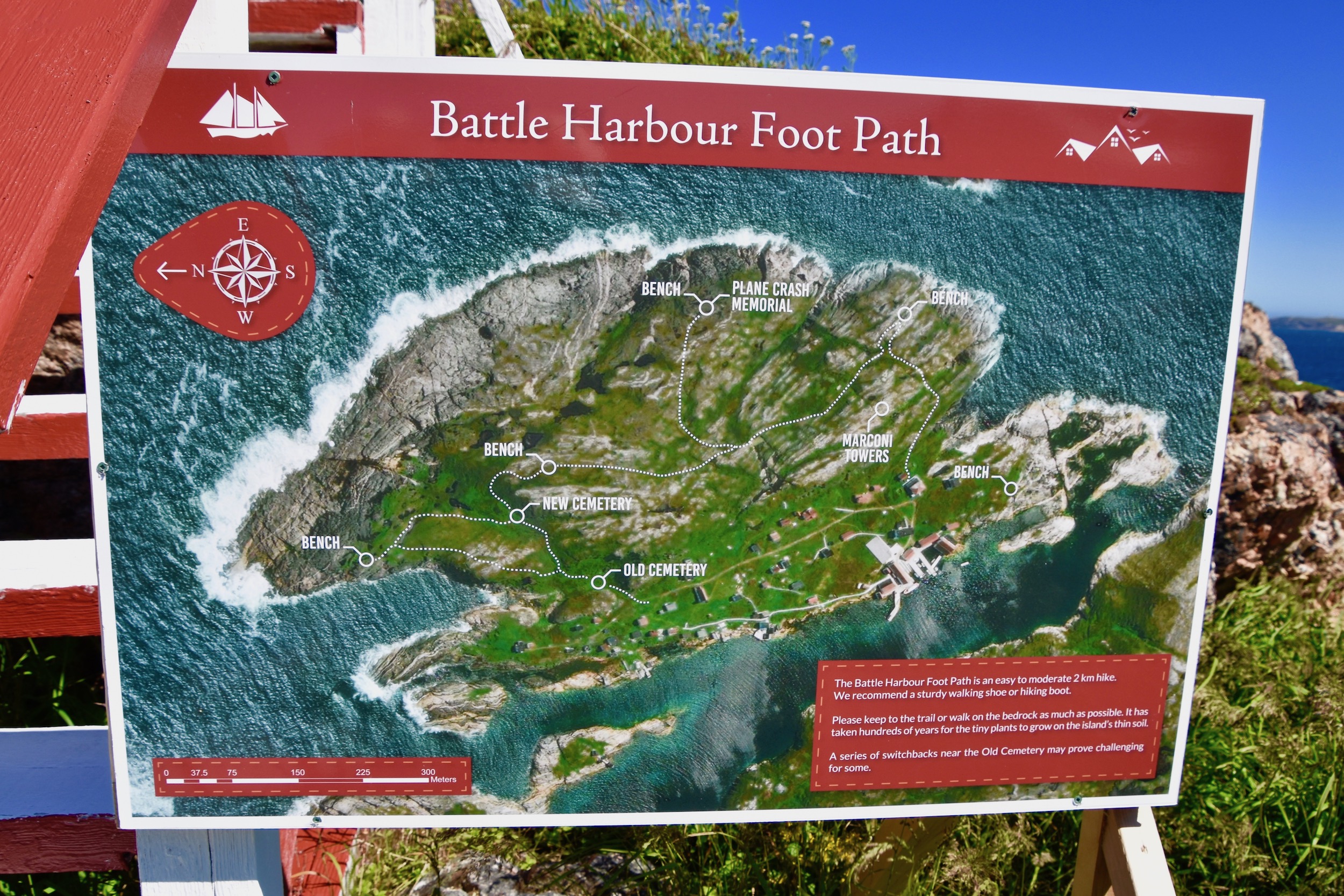
Battle Island is not that large and you can visit pretty well all of it in about an hour or so on the Battle Harbour Foot Path which starts right behind the Merchant Building where Alison and I are staying. There are a number of benches where you can sit and enjoy the tremendous views.
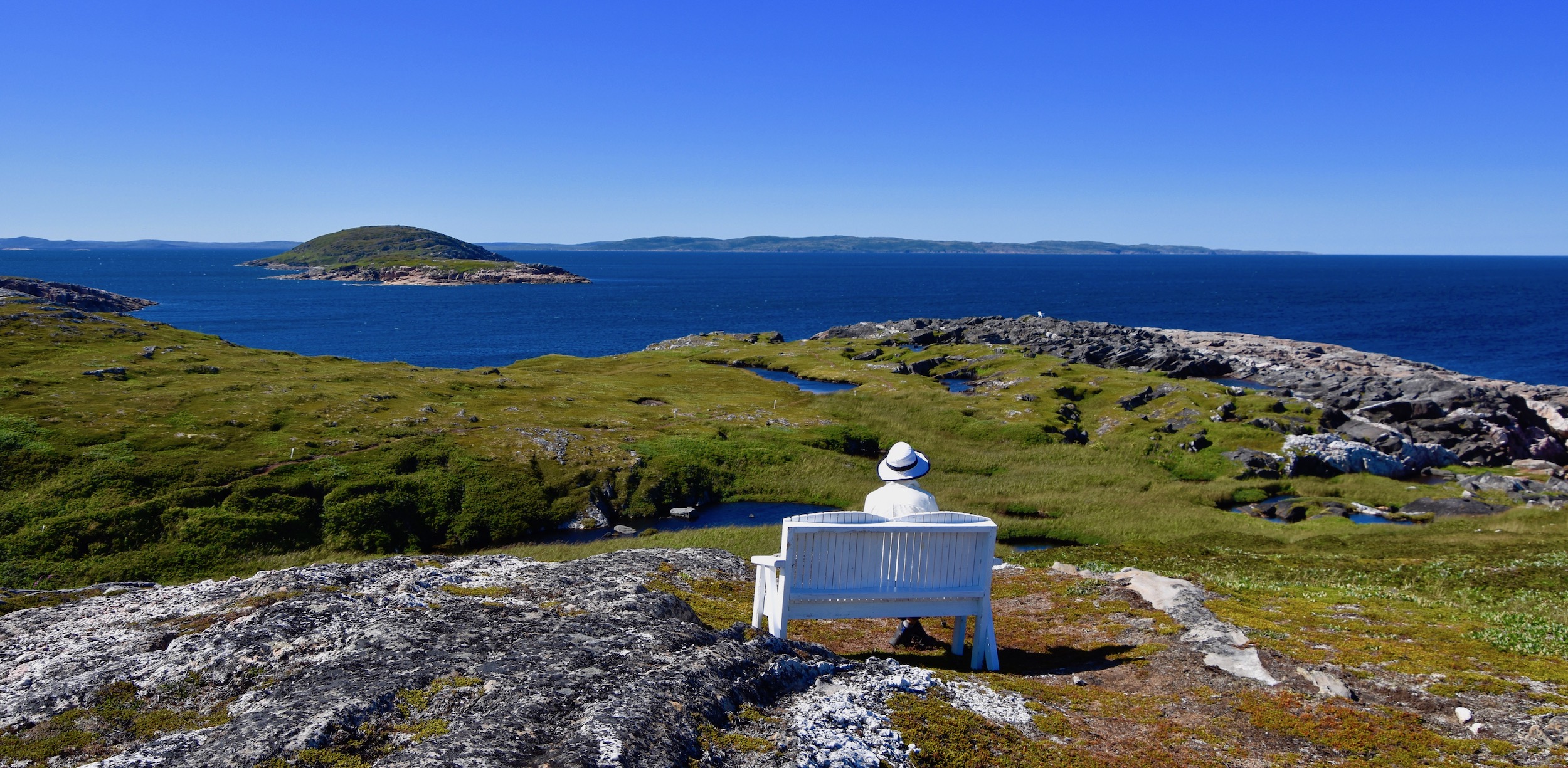
There are plenty of places to pick bakeapples, but be aware, they are bloody addictive they taste so good.
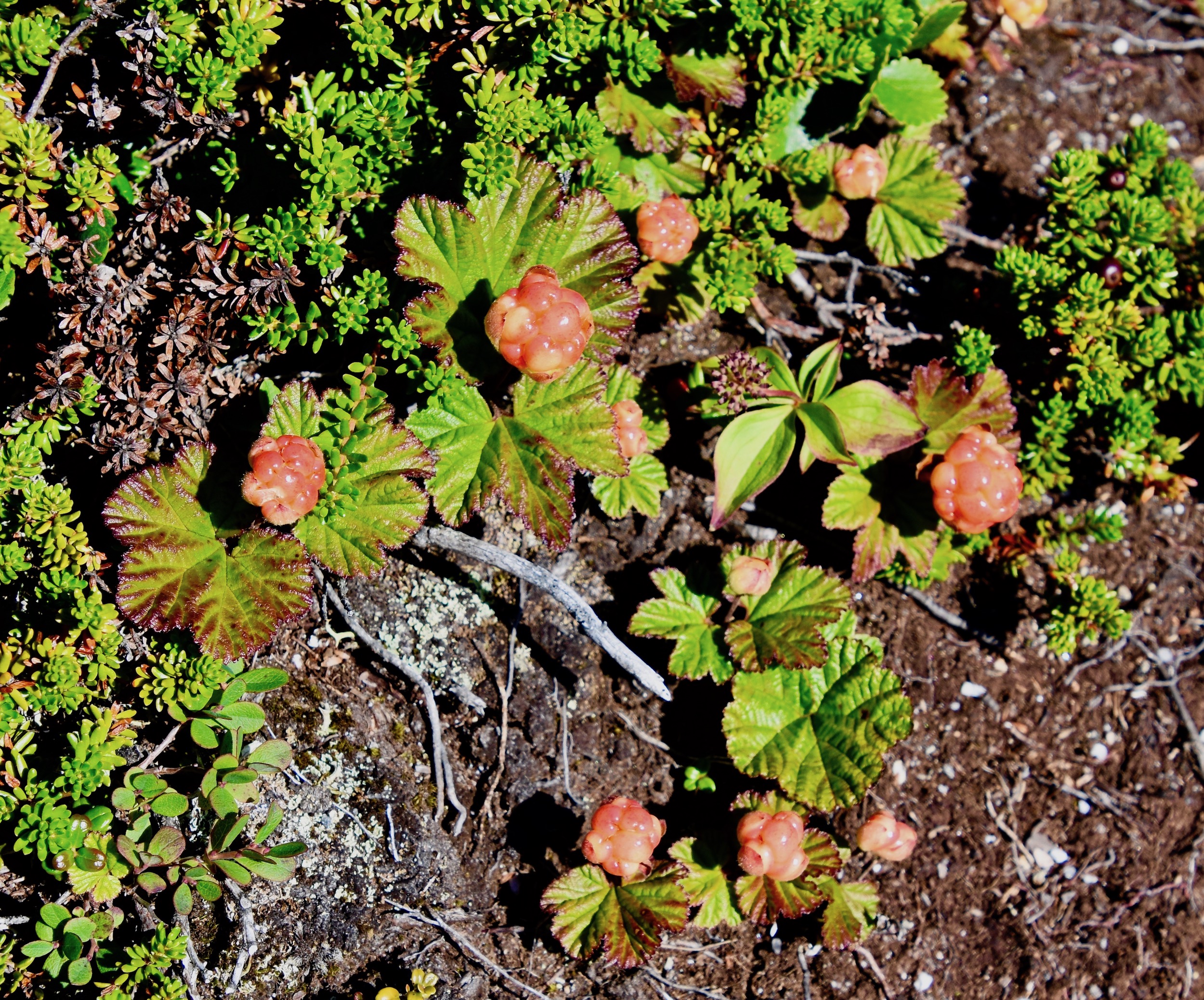
One of the most prominent features of Battle Harbour are the two Marconi towers which were erected in 1904 and were an important communication centre for Labrador for many years.

This is a photo of Robert Peary who arrived at Battle Harbour in September 1909 to broadcast to the world that he was the first person to reach the North Pole. It was a worldwide sensation at the time and brought hordes of reporters to the Salt Store where Peary held his press conference.
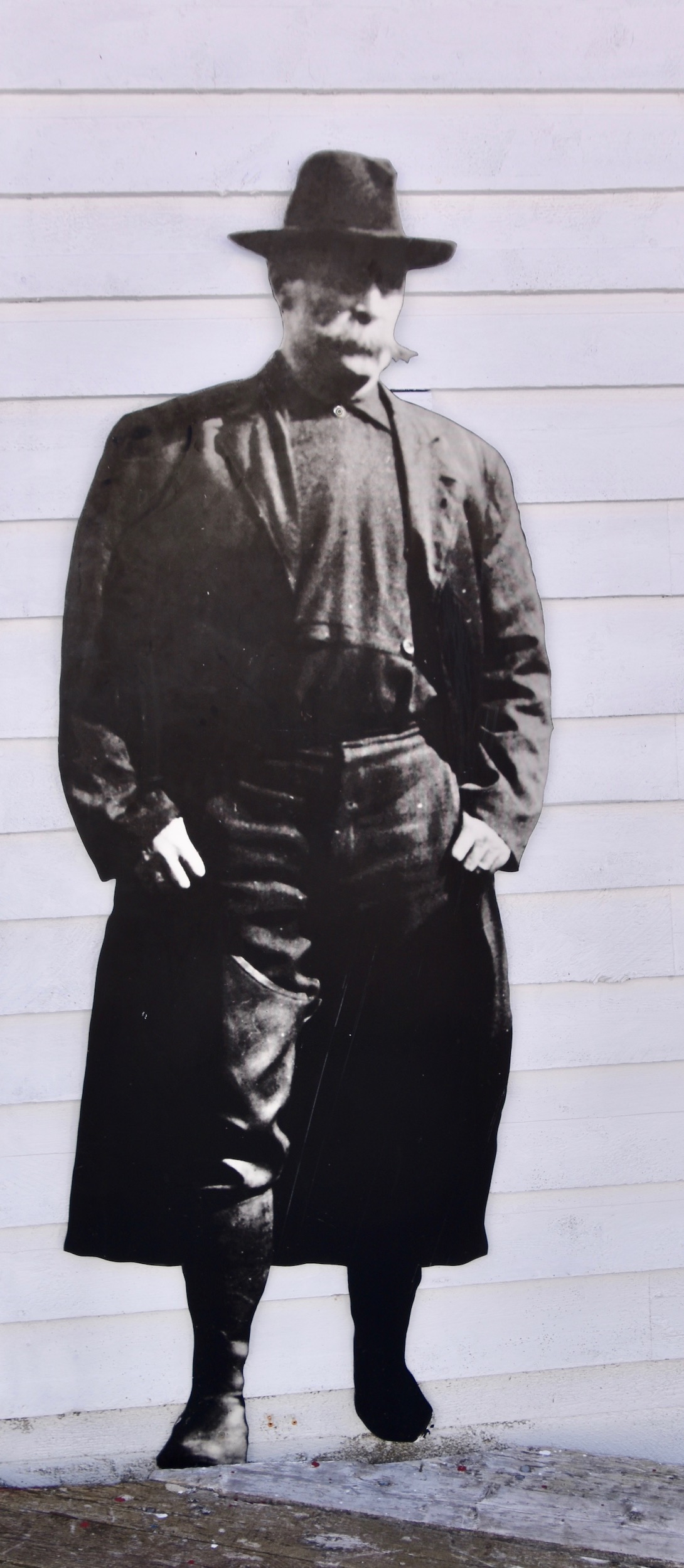
There is a more sombre memorial that you will come across on the Battle Harbour Foot Path. This is what remains of the wreckage of a small aircraft that crashed here in the fog on July 31, 1976. Three young men lost their lives on that fateful day.

There are two cemeteries on Battle Island to explore.

This is the newer of the two and is located in a hollow which is one of the few places on the island that actually has enough soil to bury a person. It also has an unusual feature that appears in a number of places in Battle Harbour. Monkshood flowers grow in circular patches adding some contrast to the otherwise green landscape.
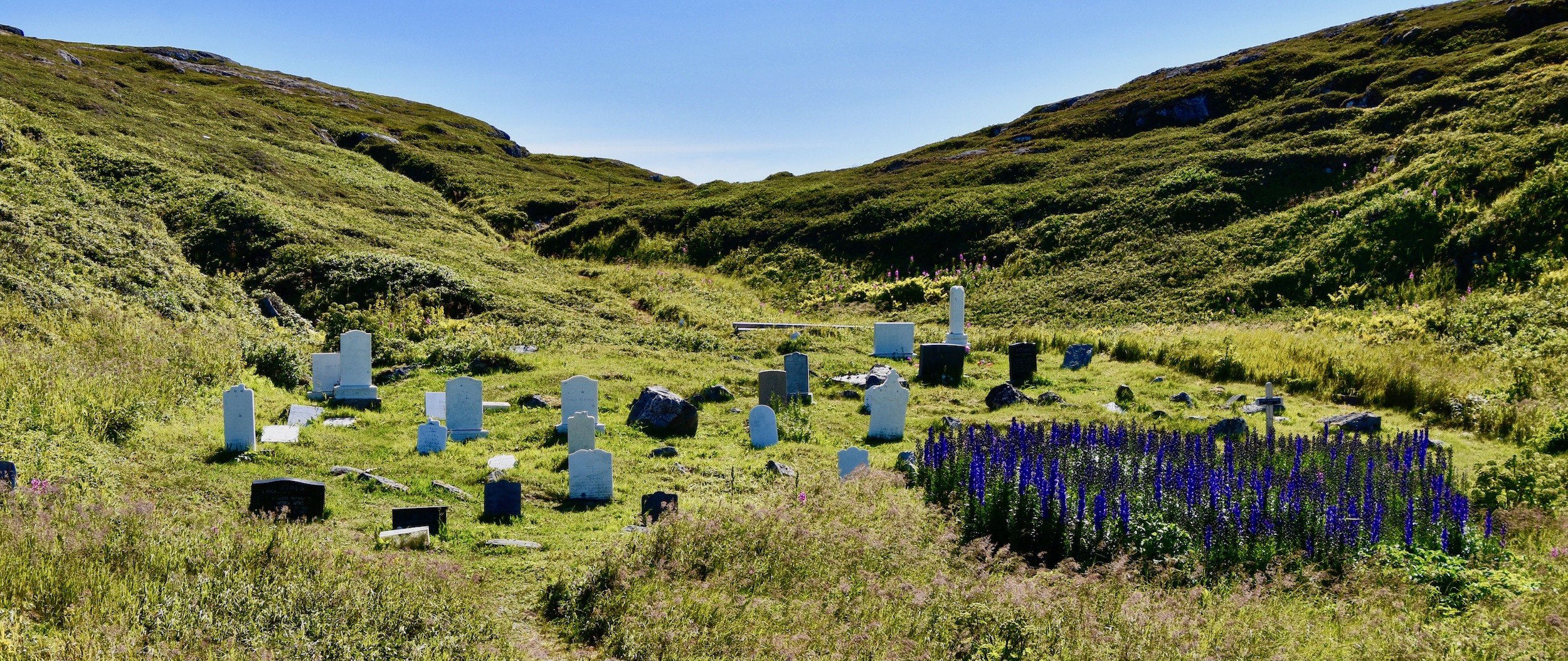
One other feature of Battle Harbour that will amaze you are the multi-coloured rocks. Here are just a few samples.

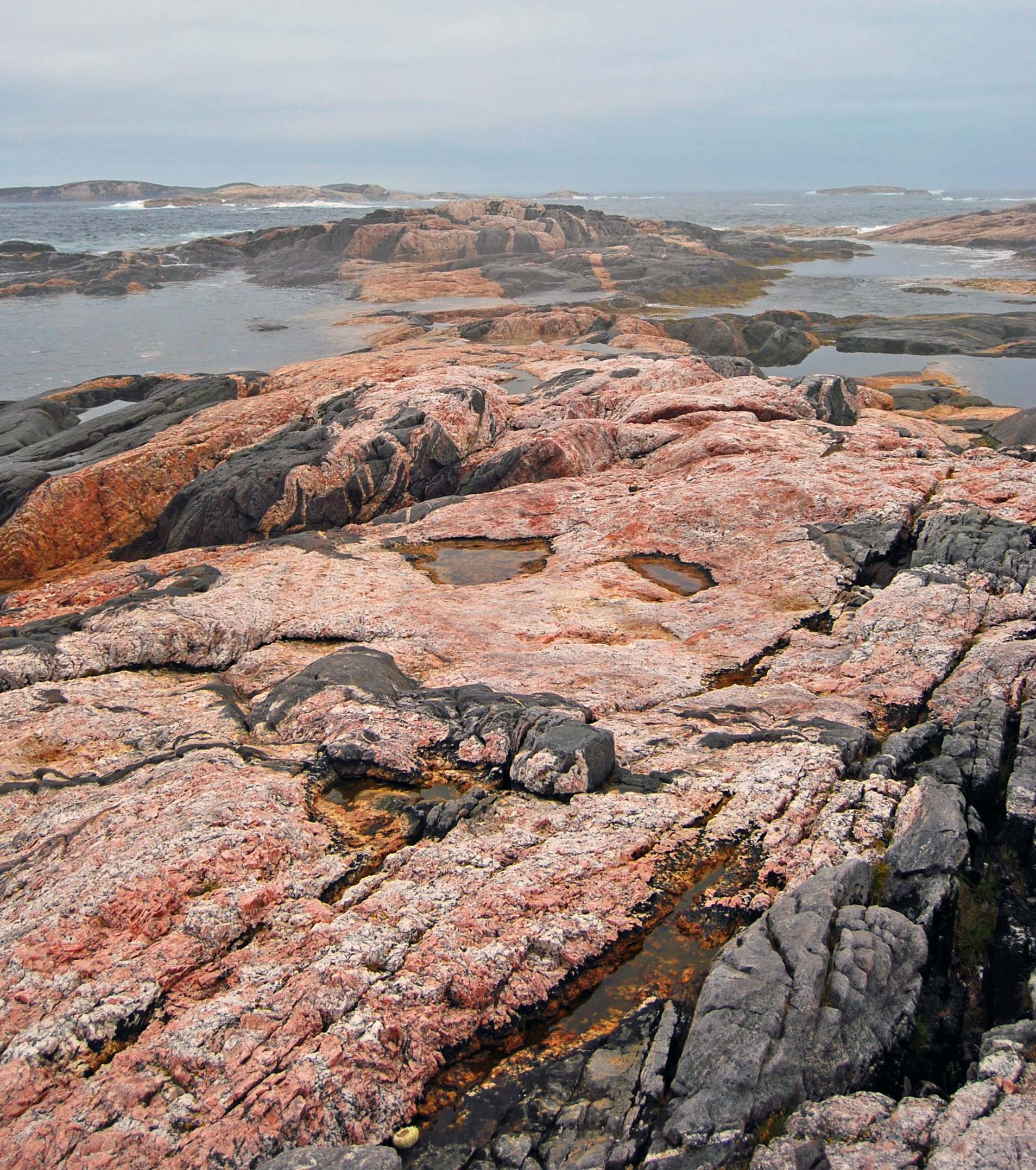
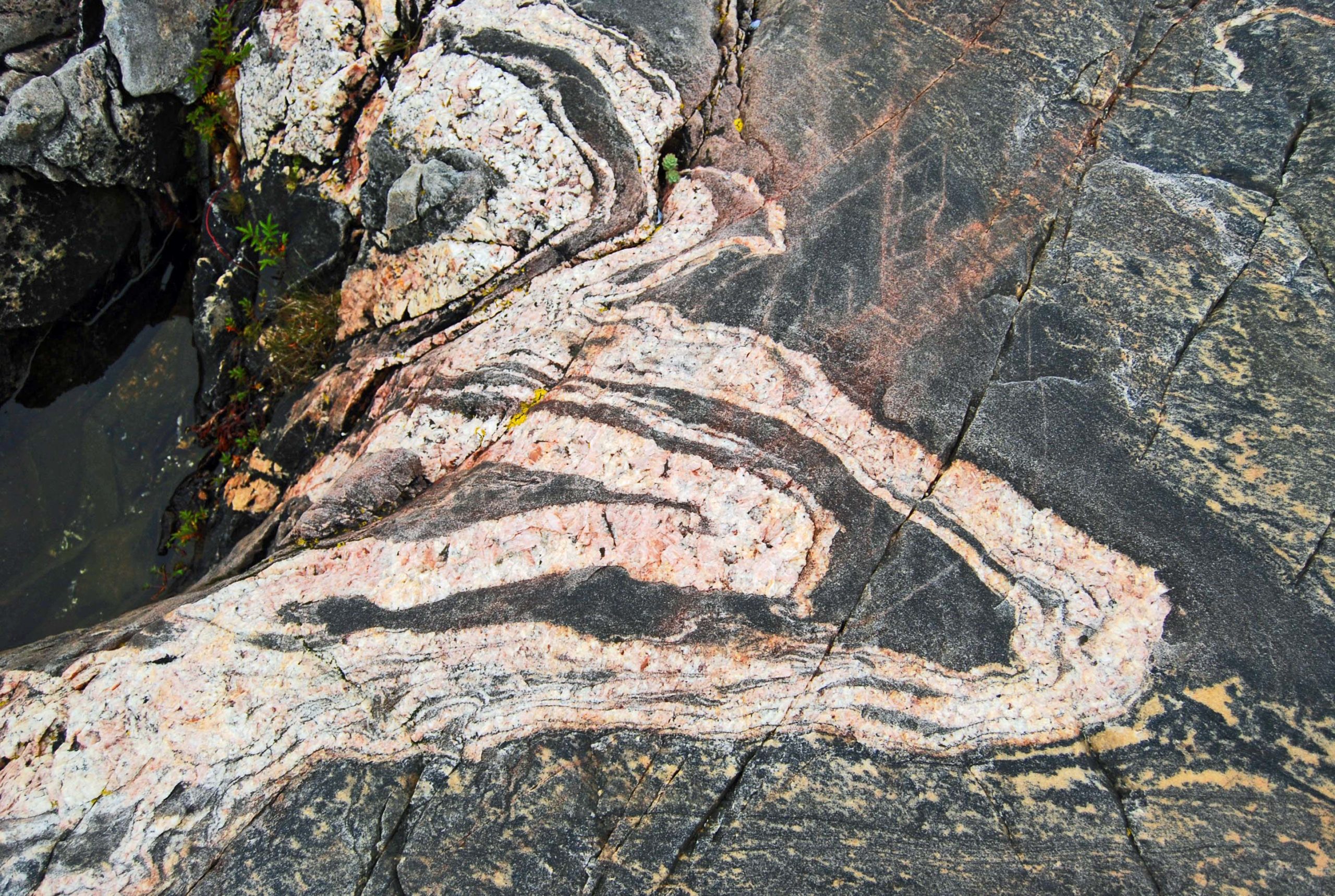
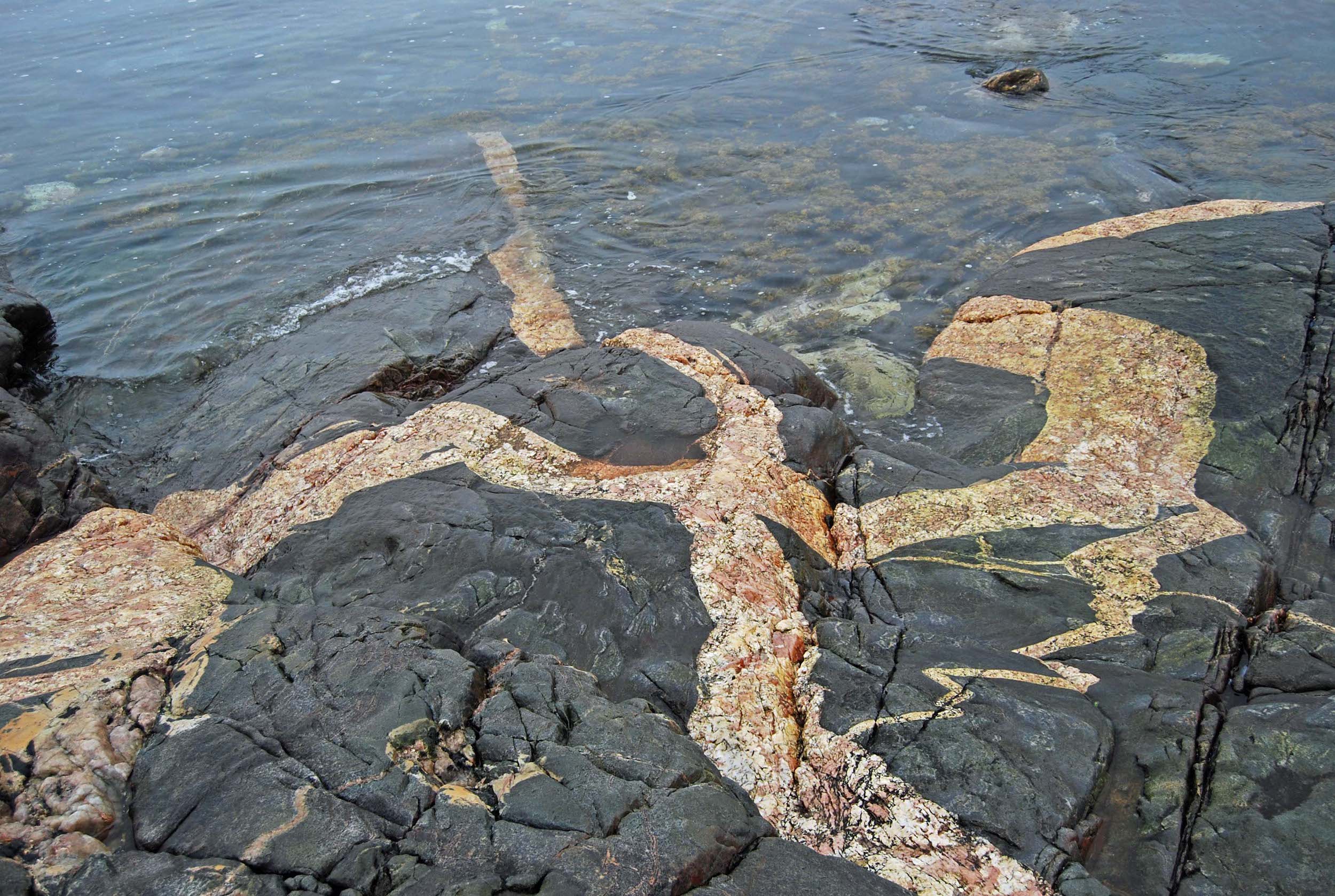
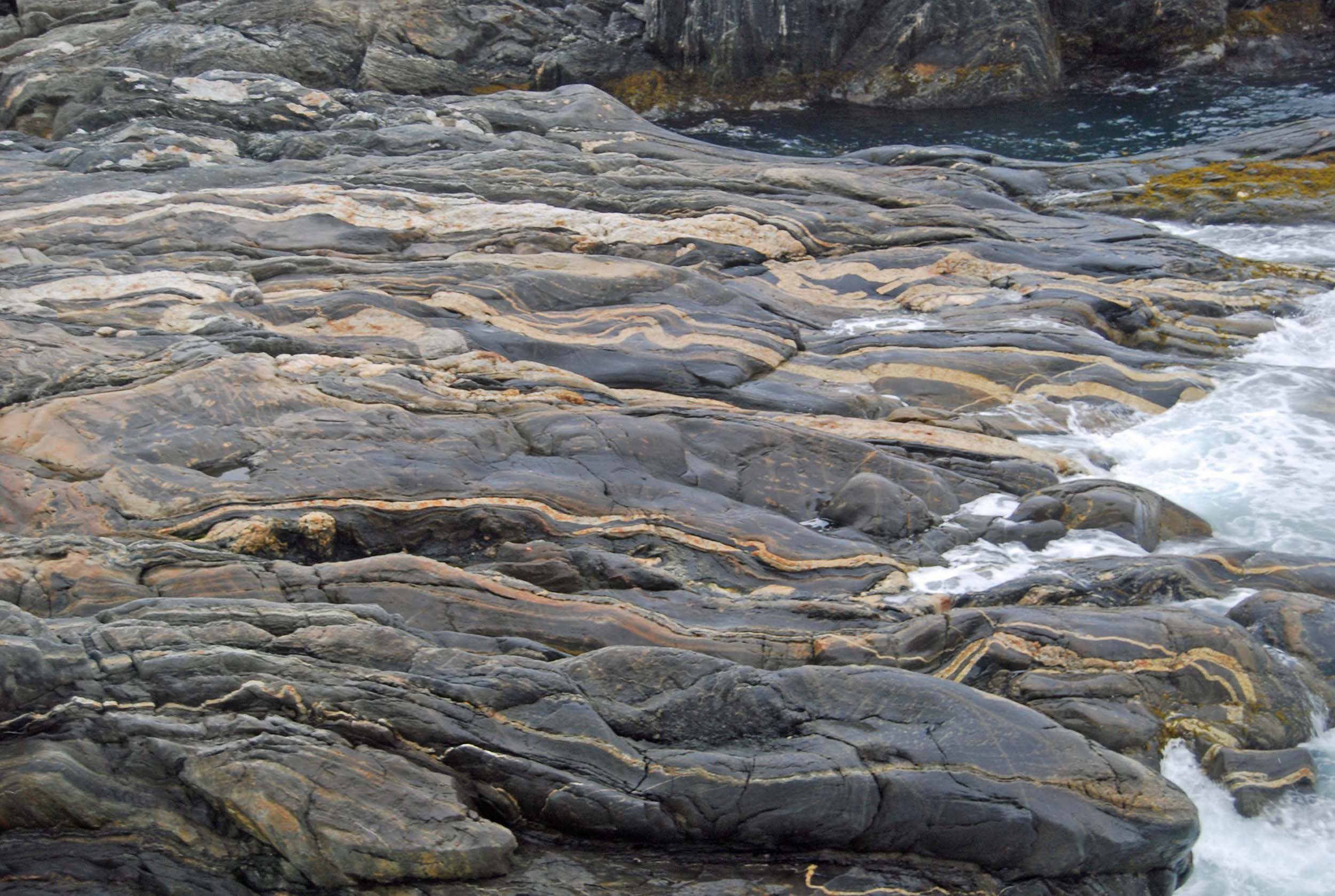
There is so much more I could go on about at Battle Harbour, but this post is long enough already. Time to retire to the loft and enjoy a glass of wine or two.
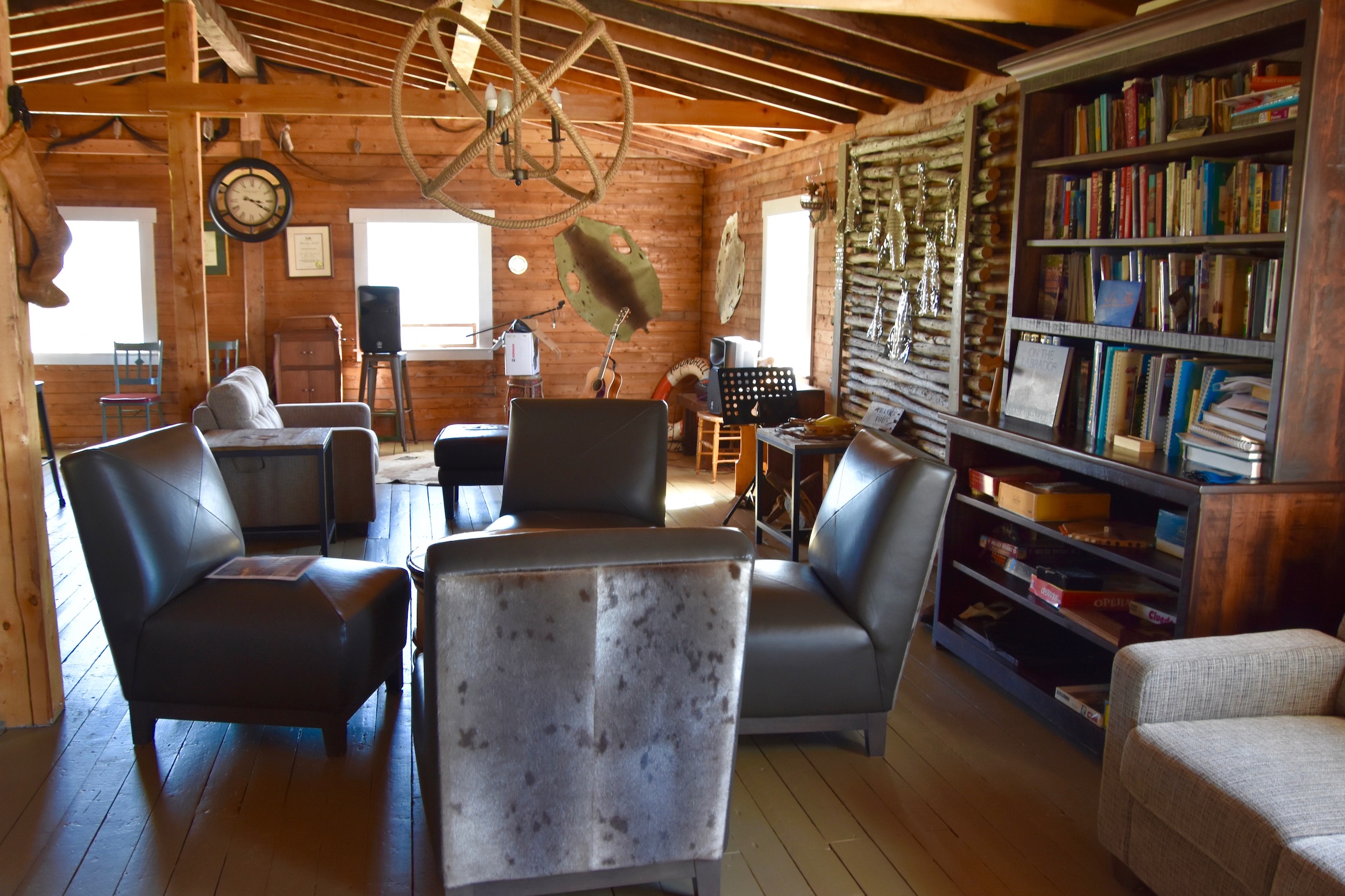
Better yet, let’s take the bottle back to the room and enjoy the sunset and reflect on what a fabulous day this has been at Battle Harbour.
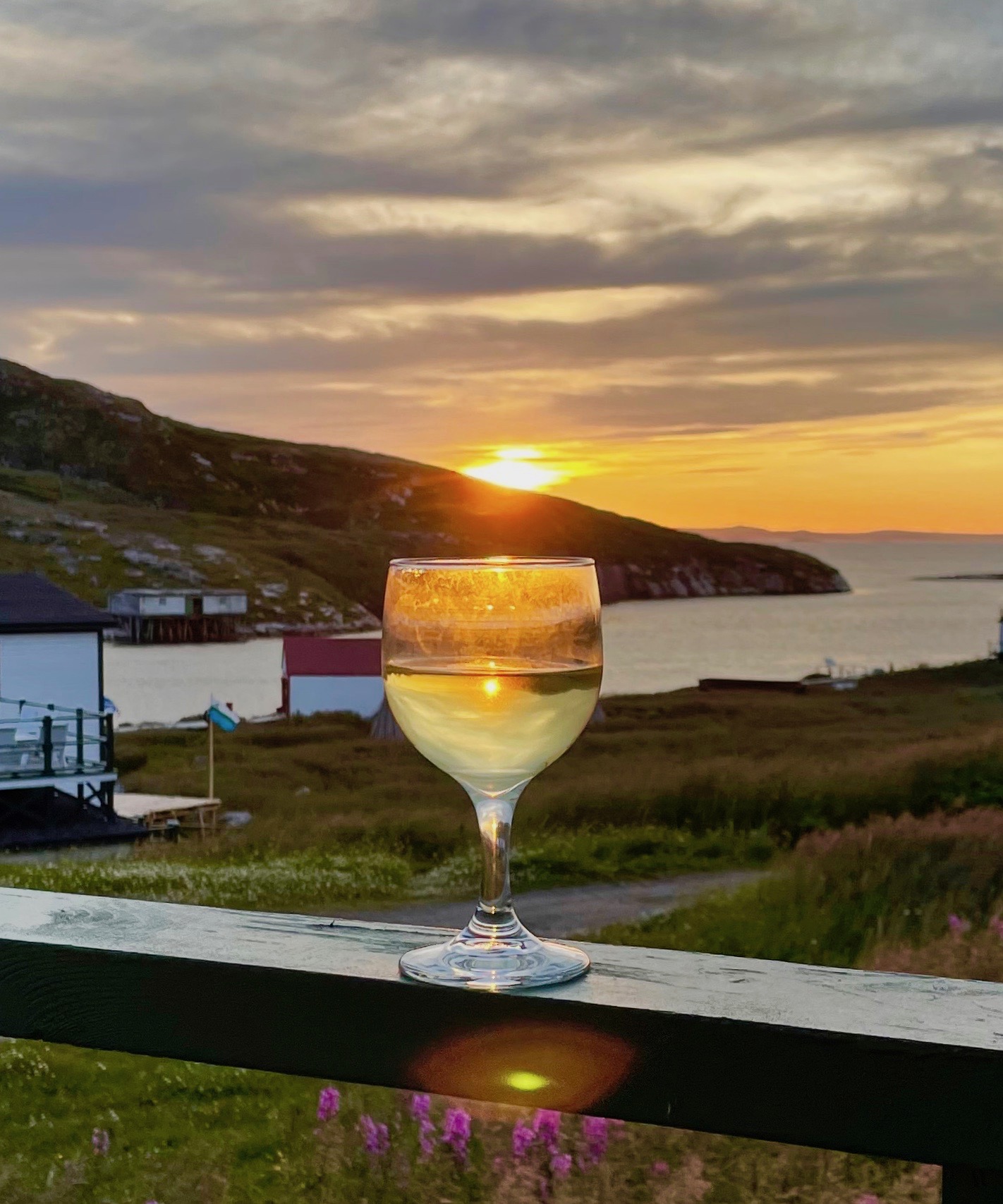
Join us tomorrow as we cross the tickle and go hiking on Great Caribou Island.

